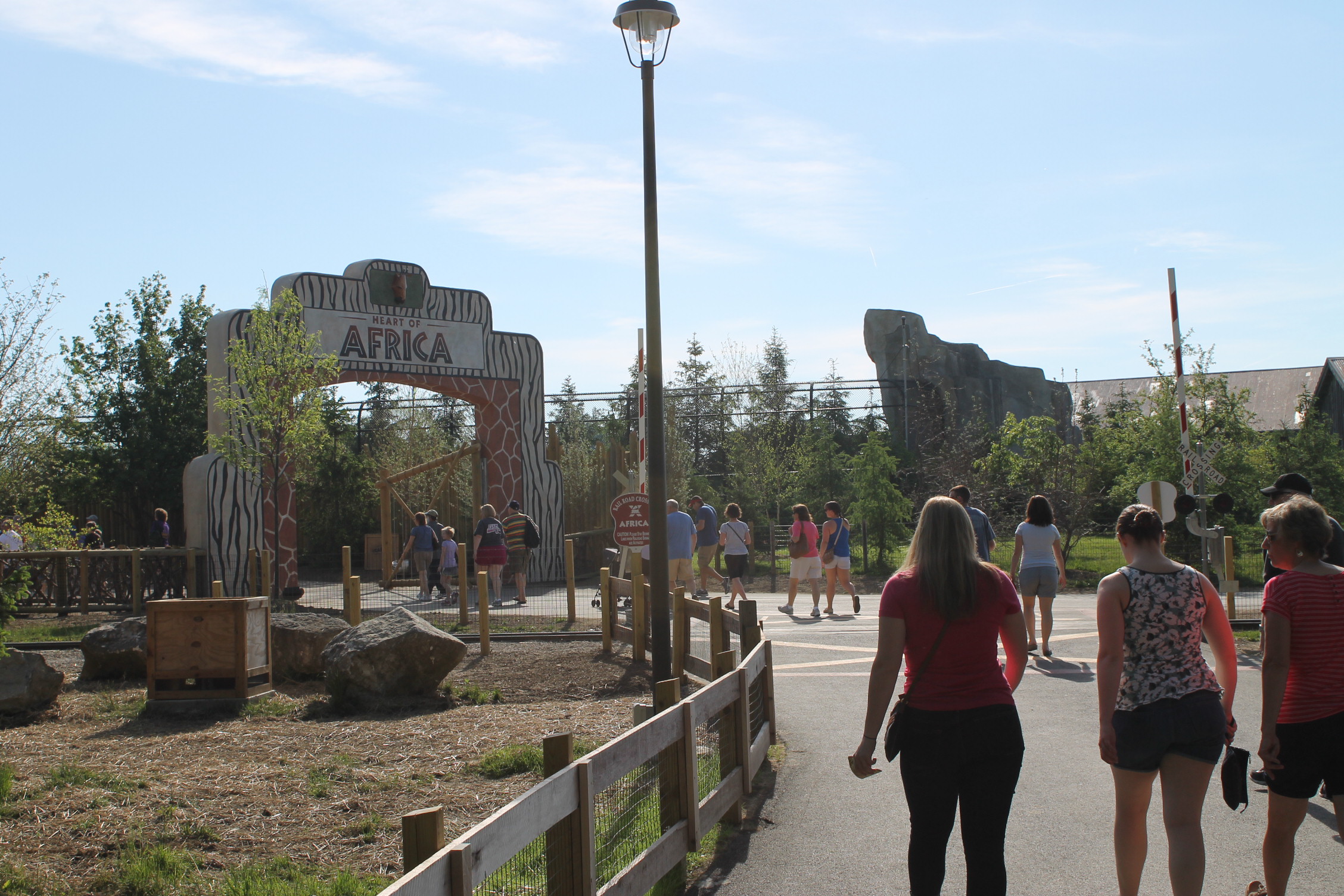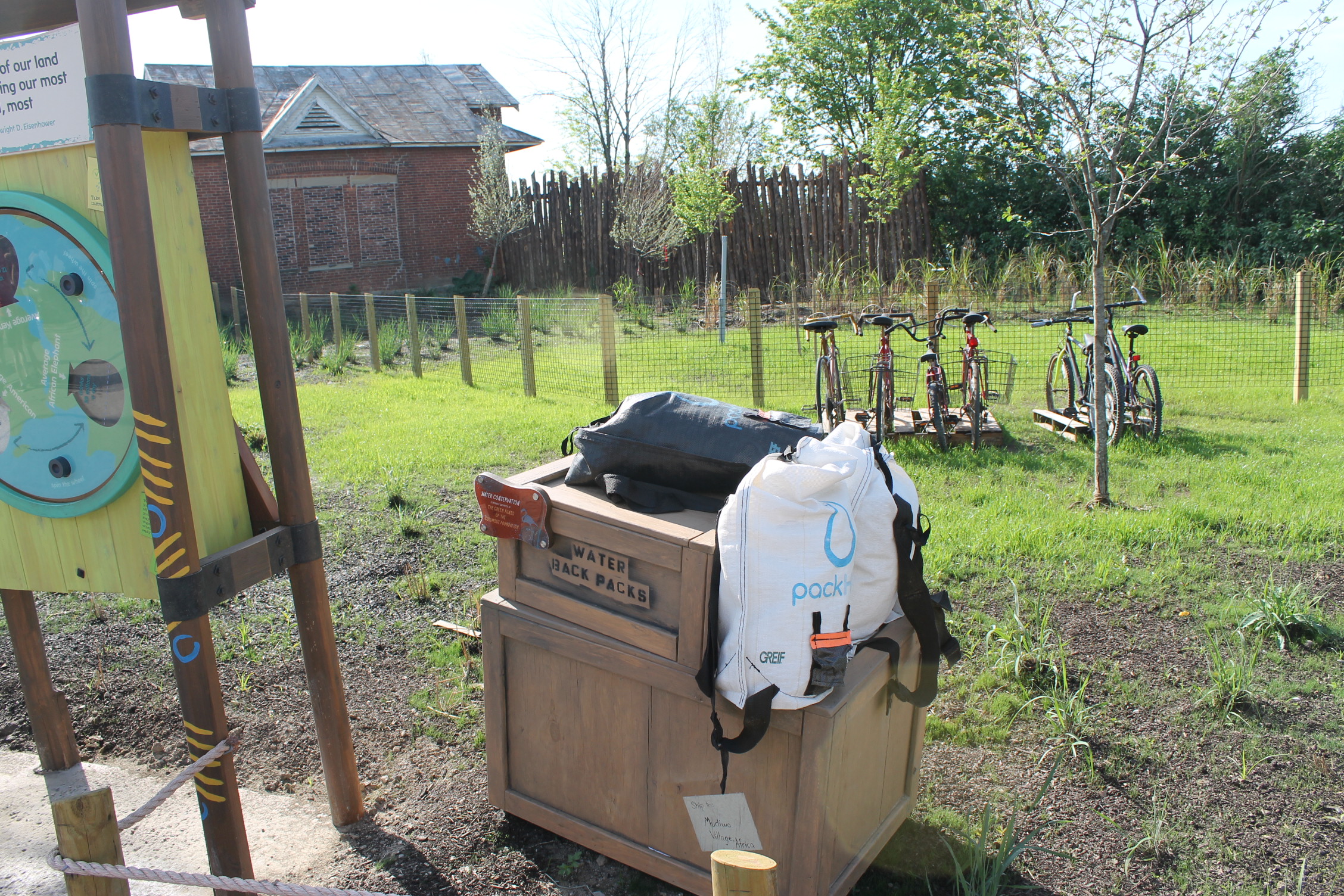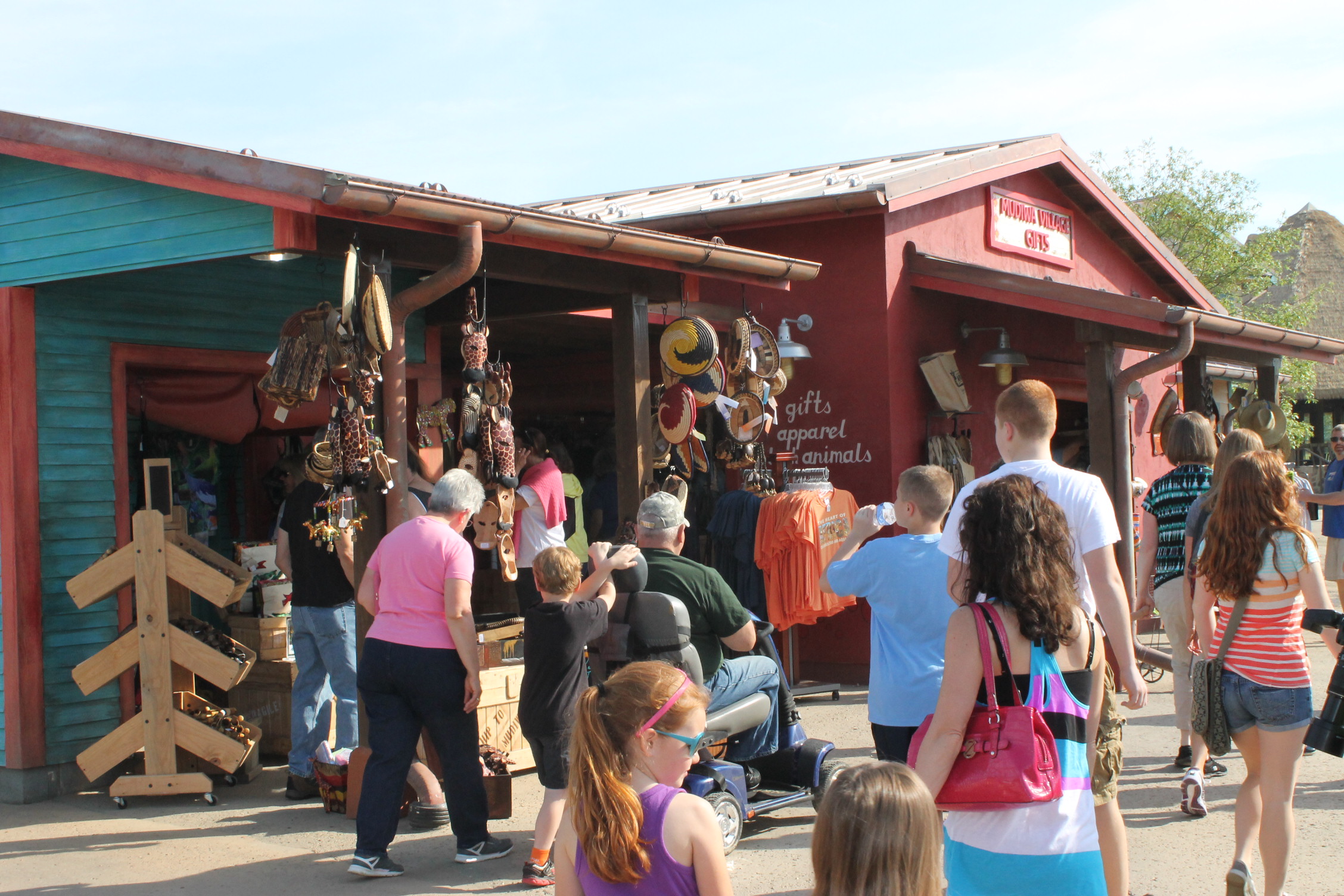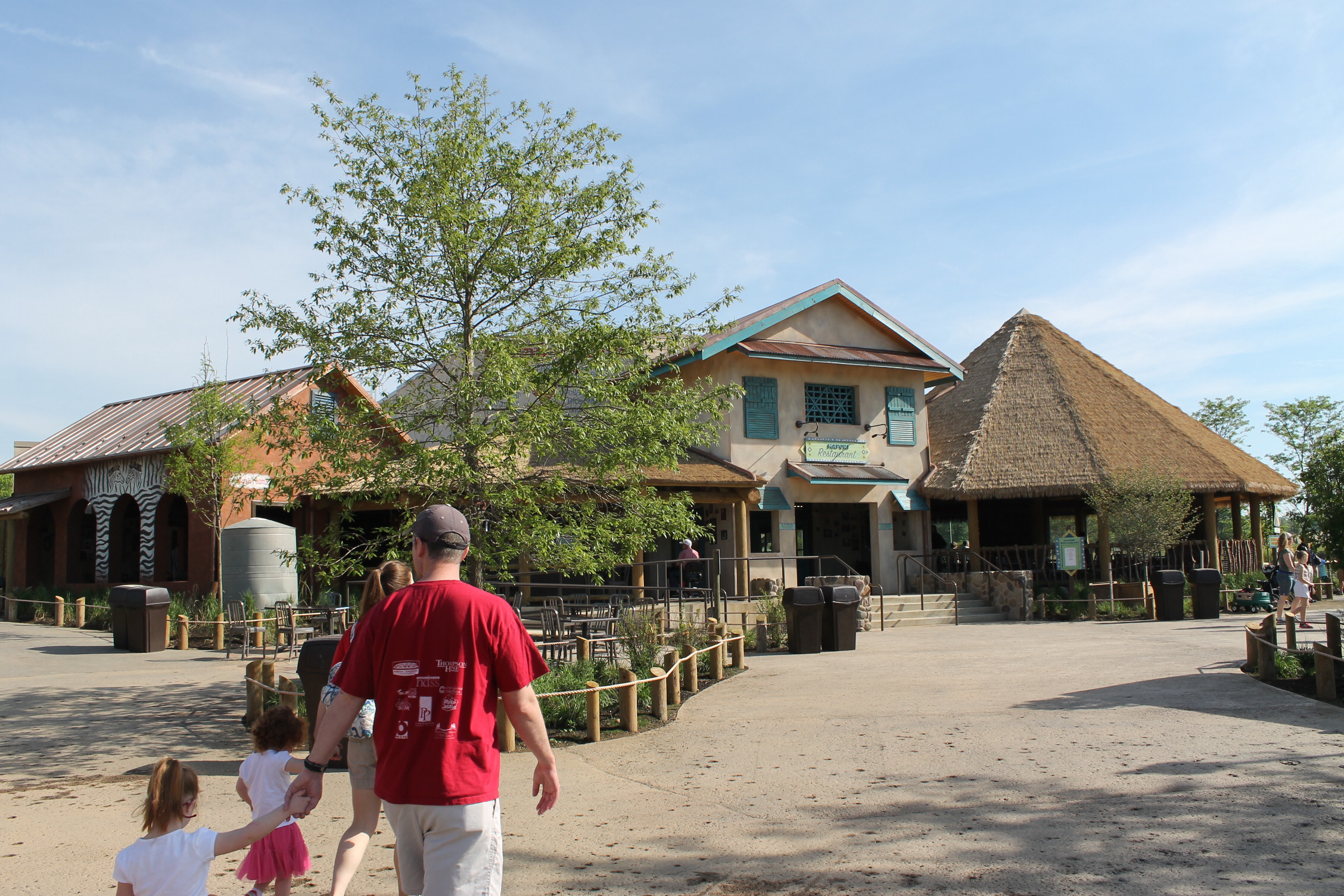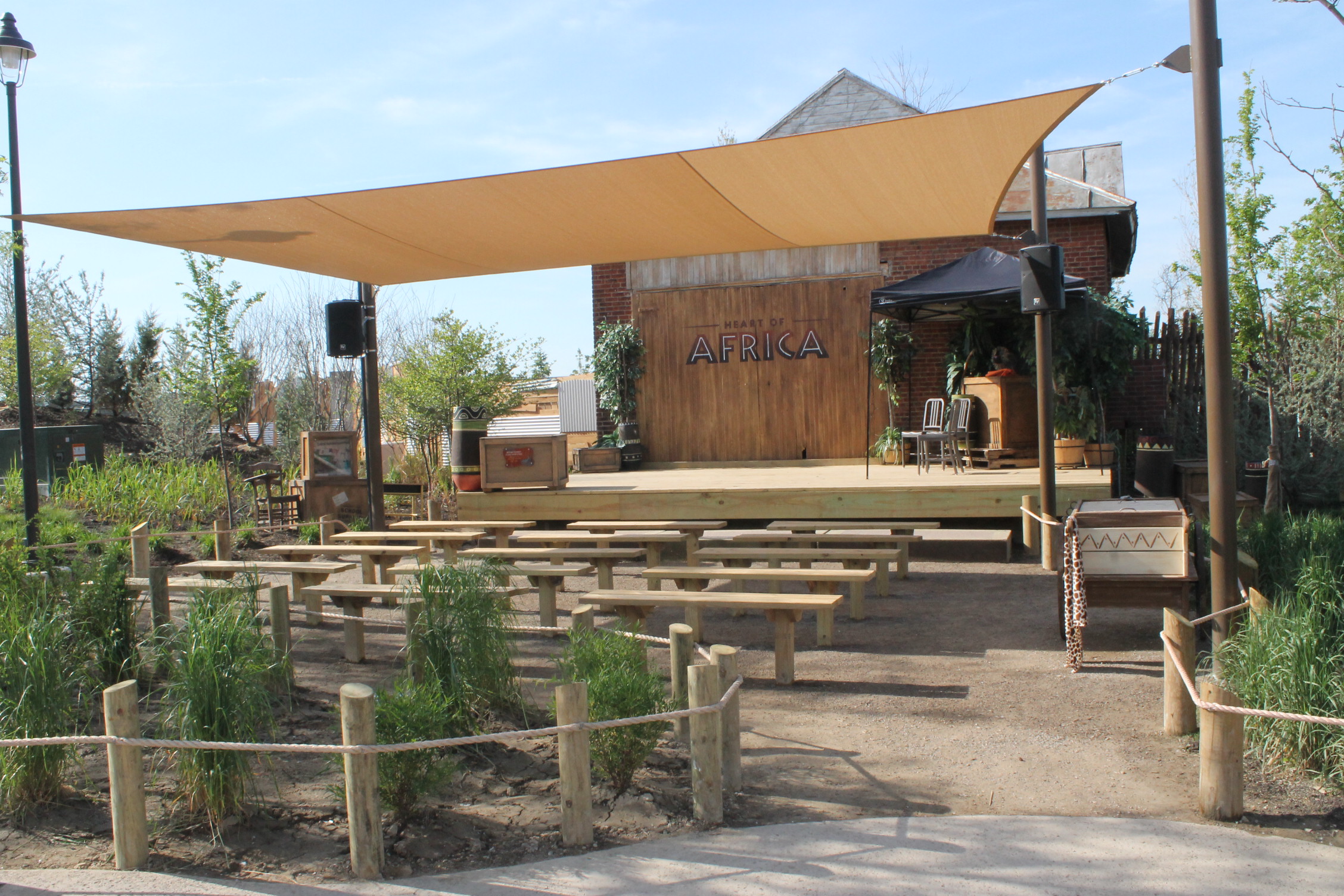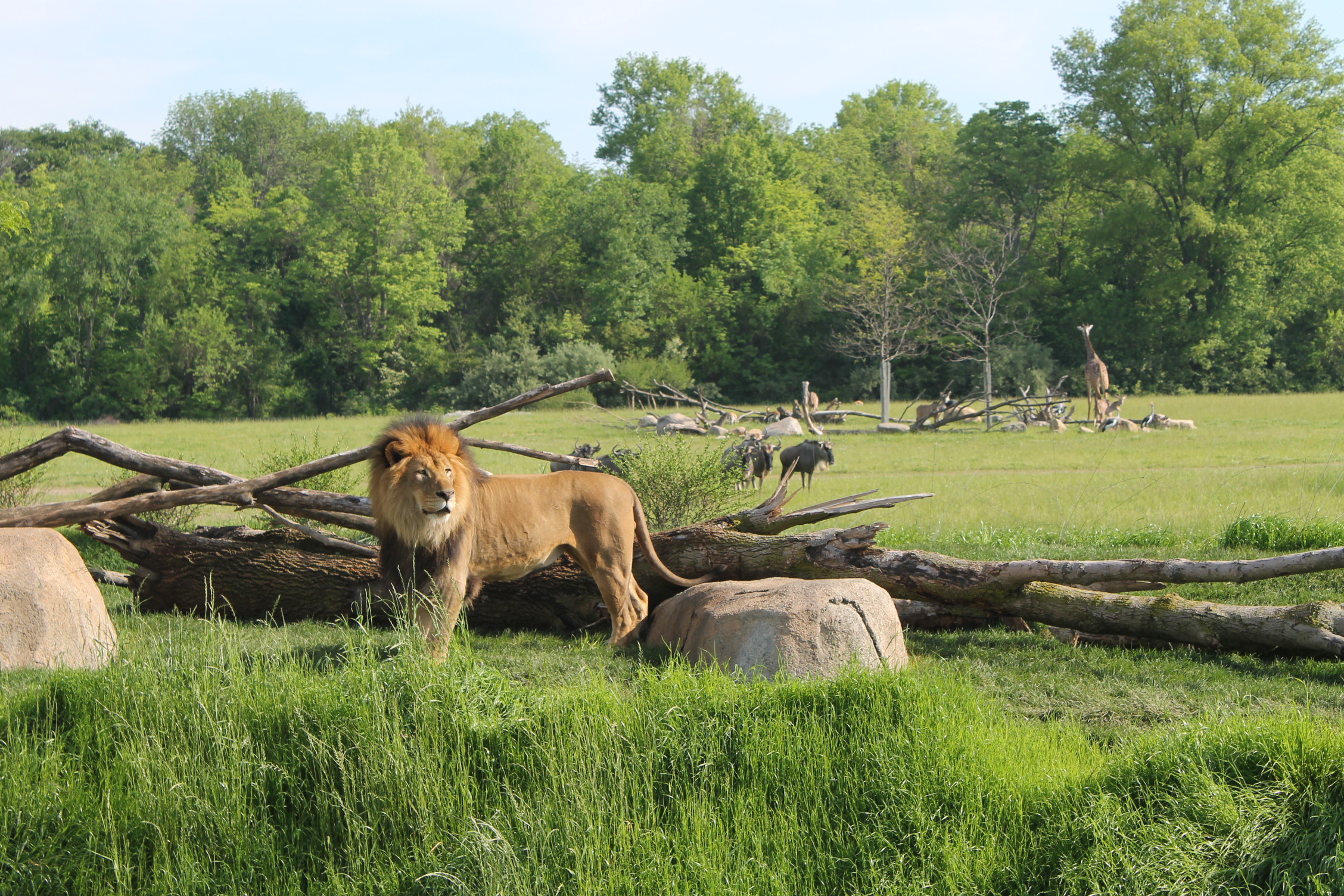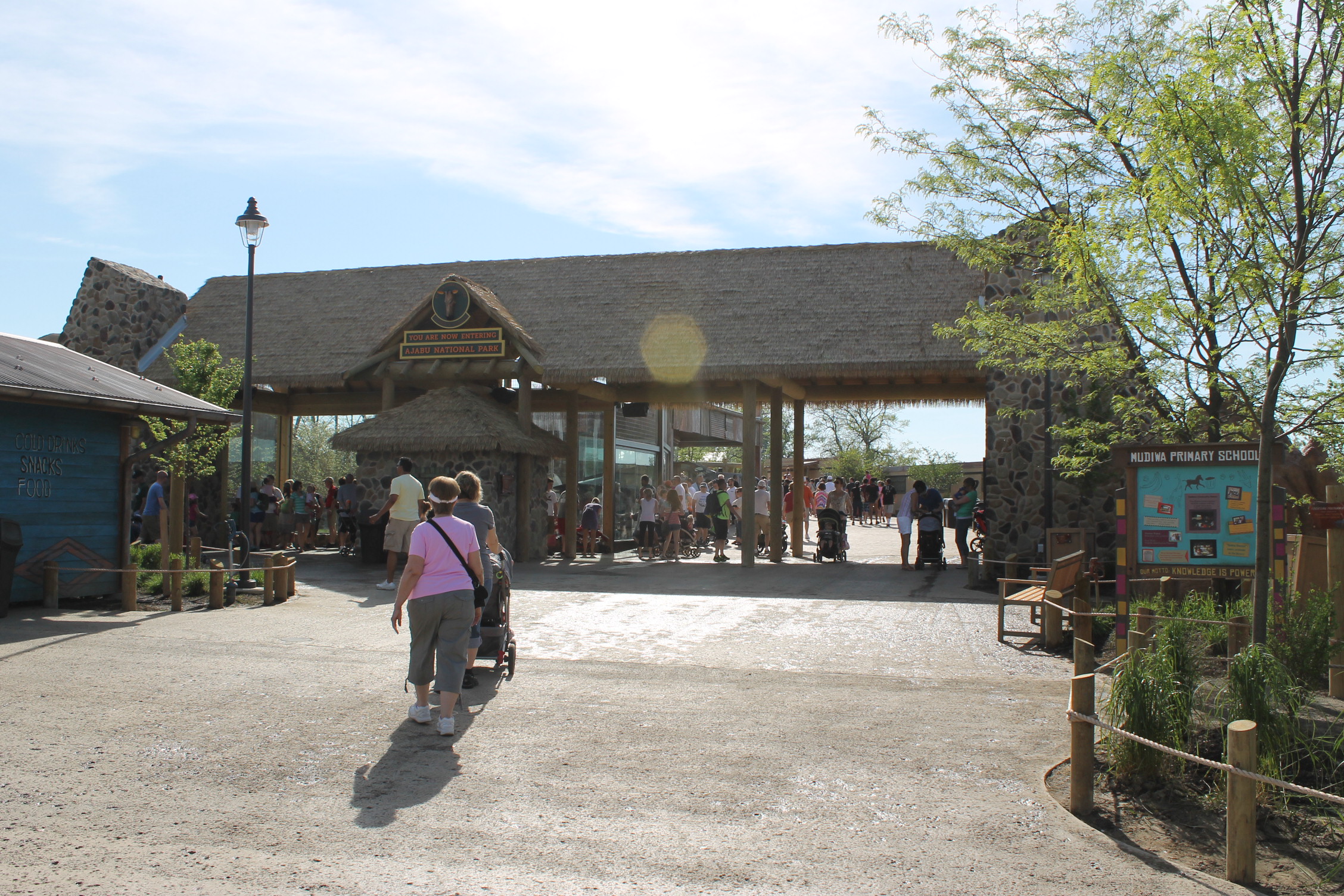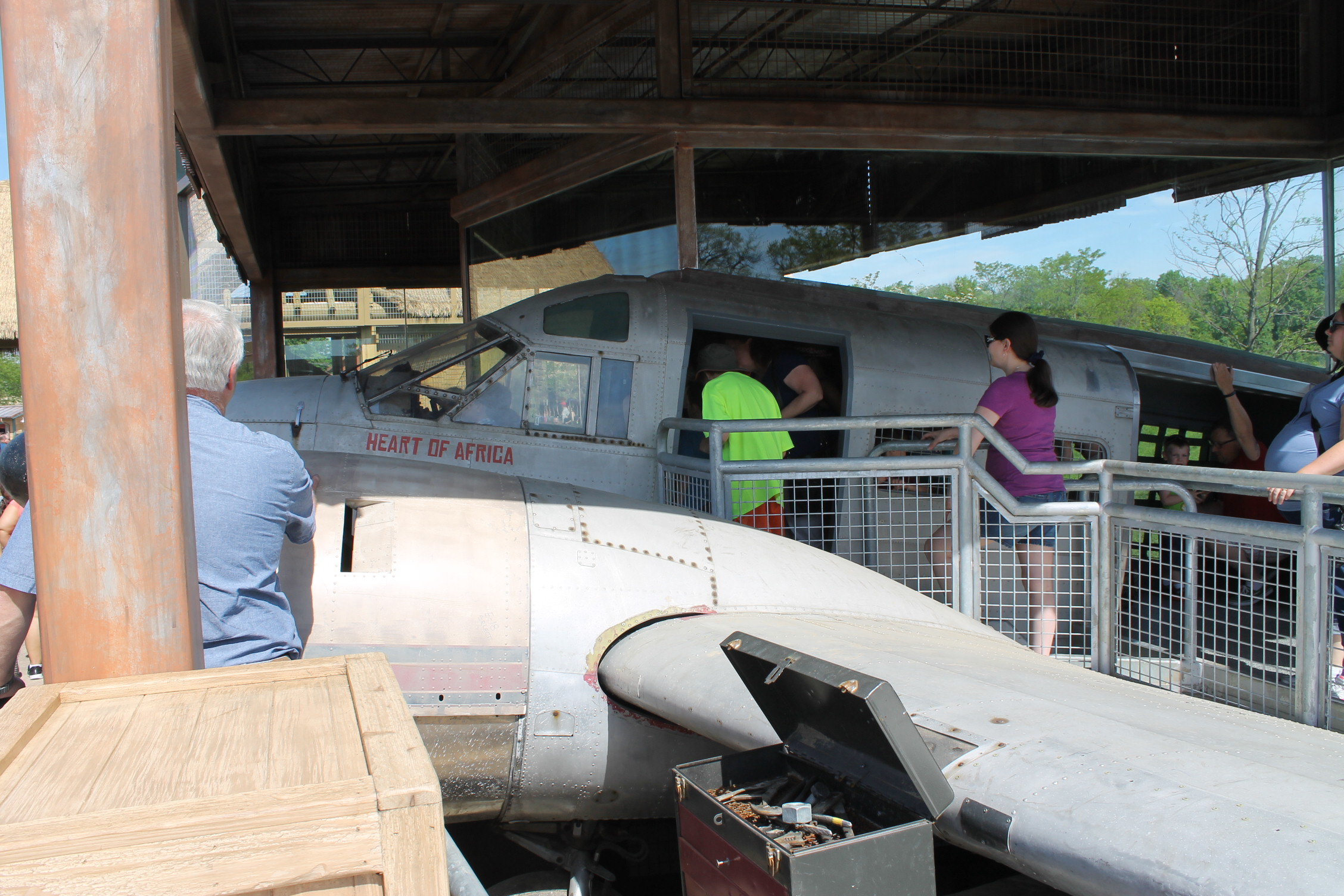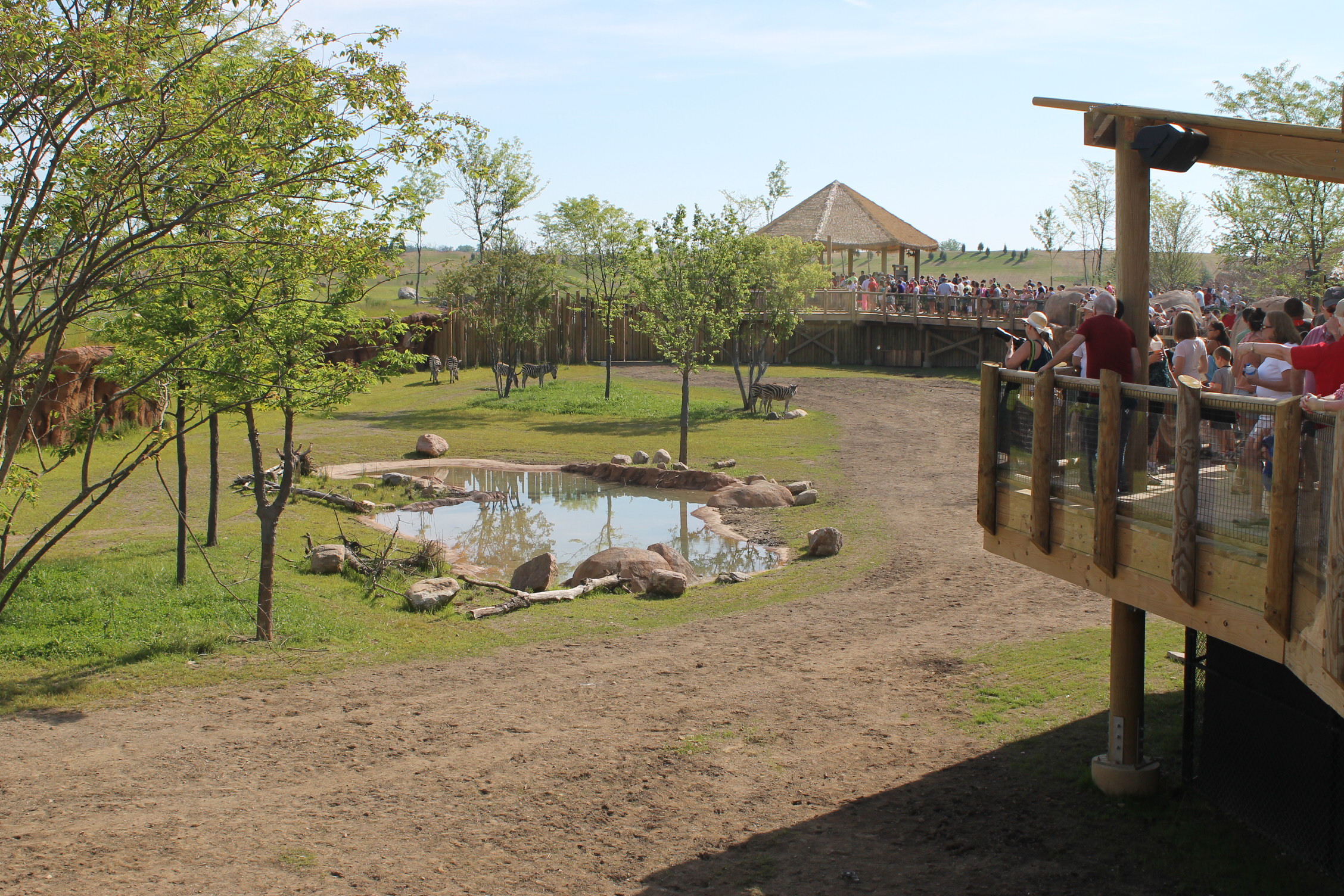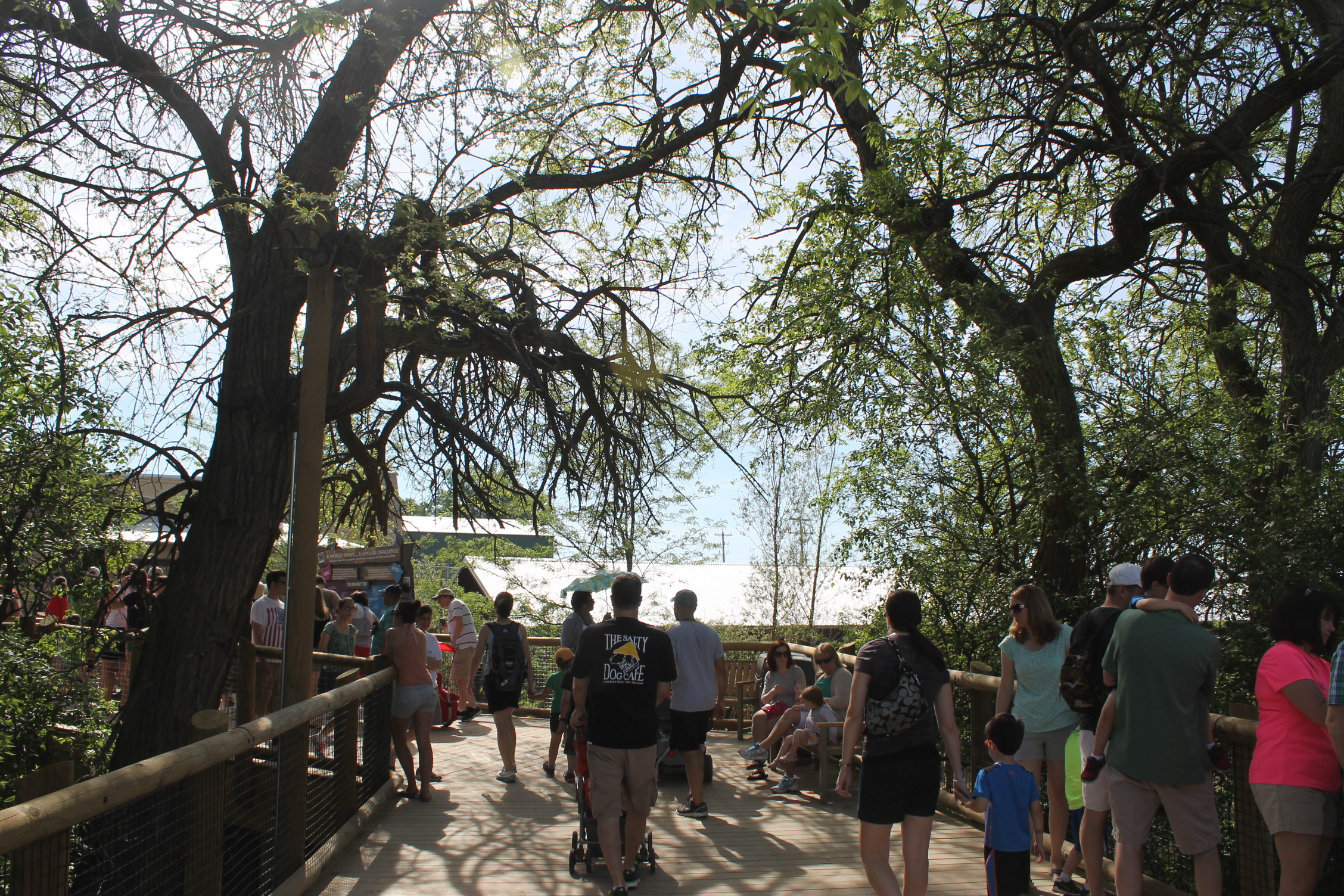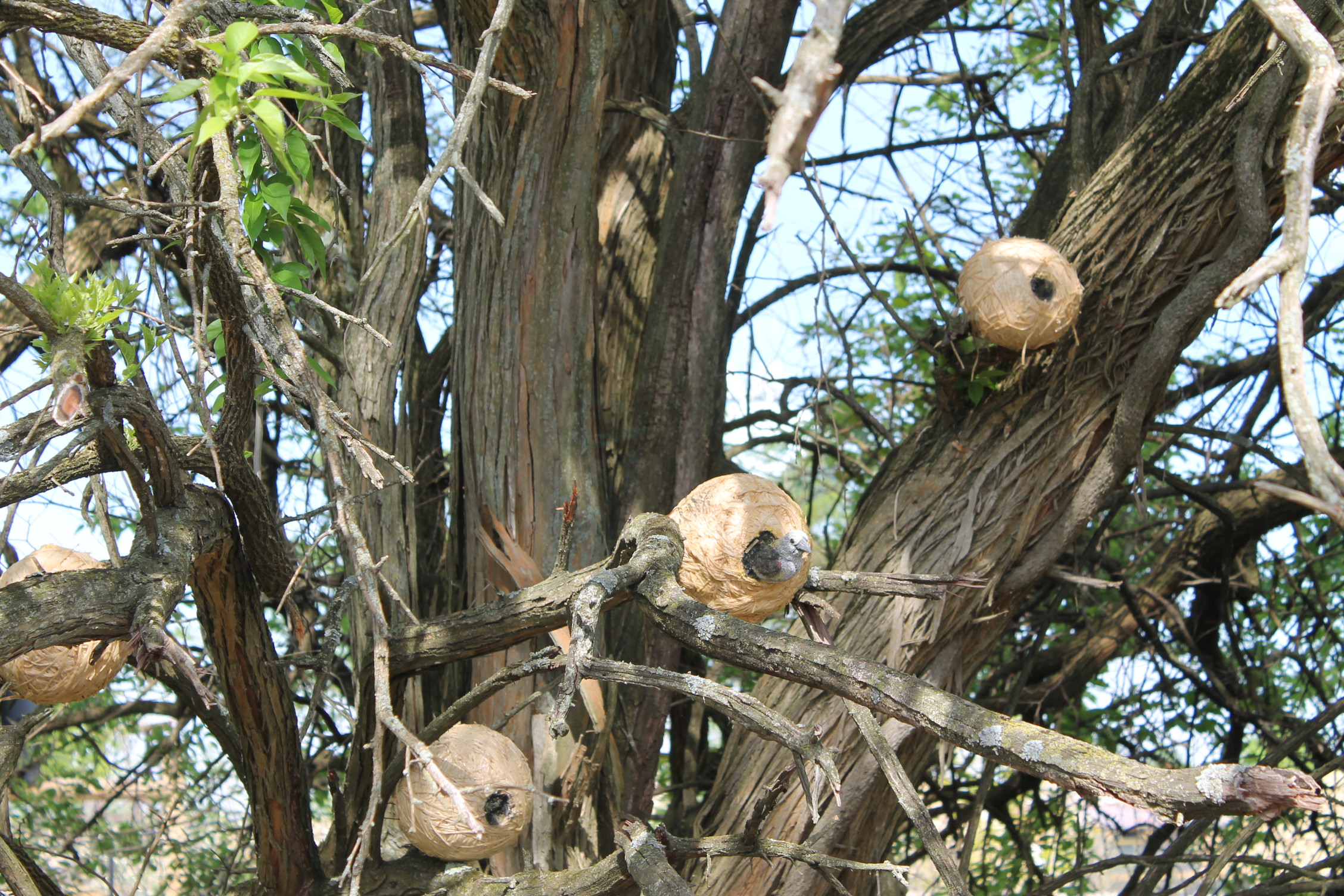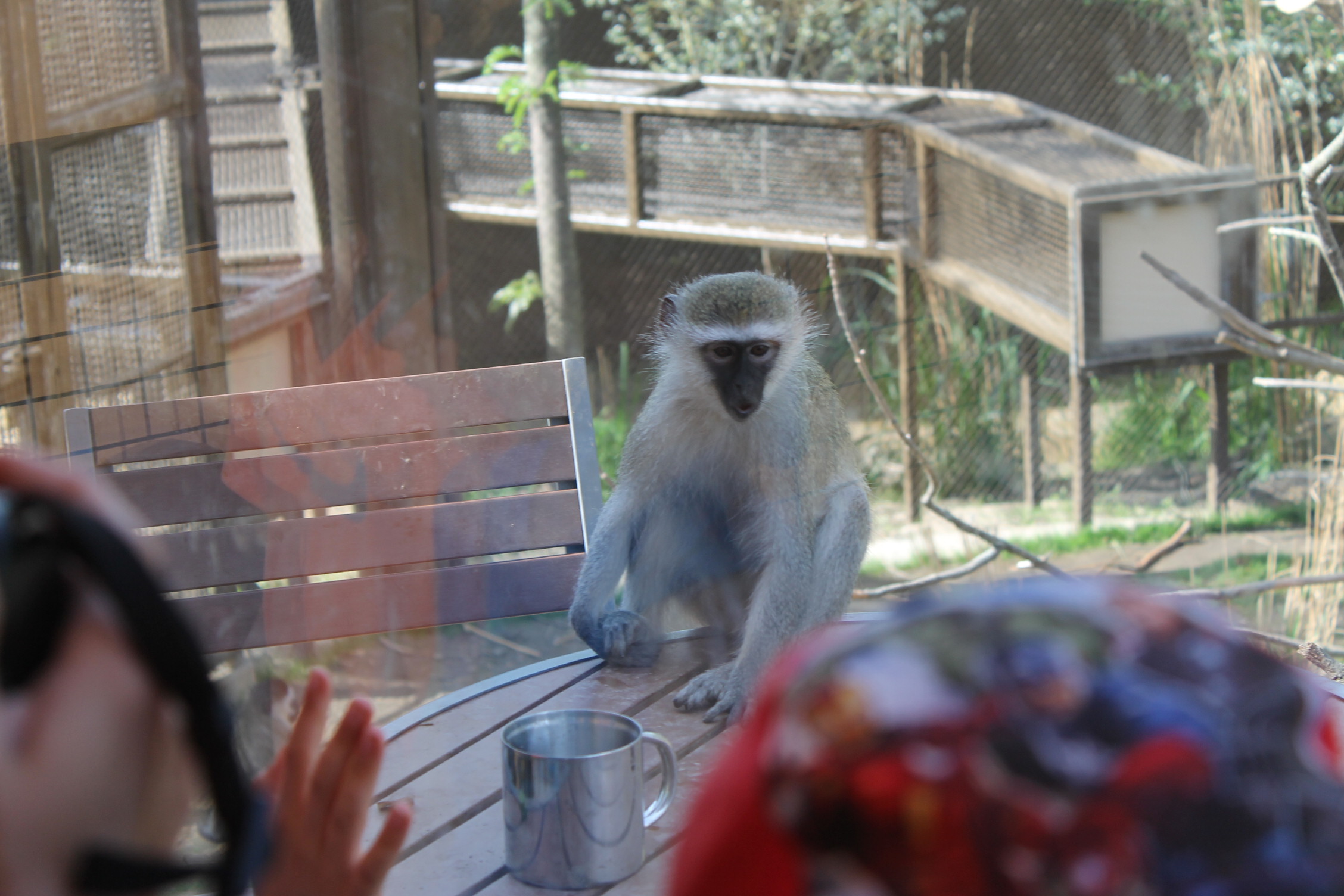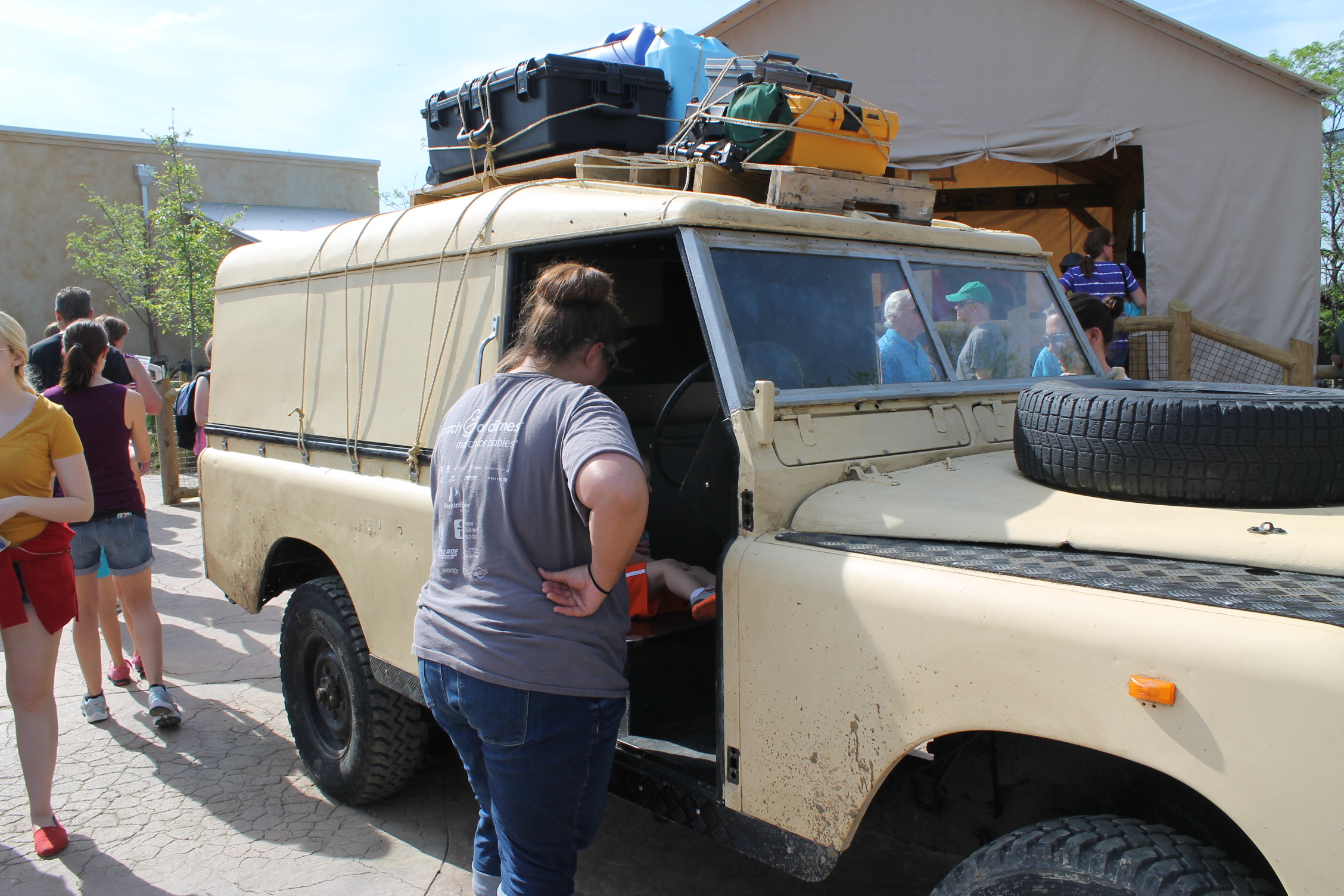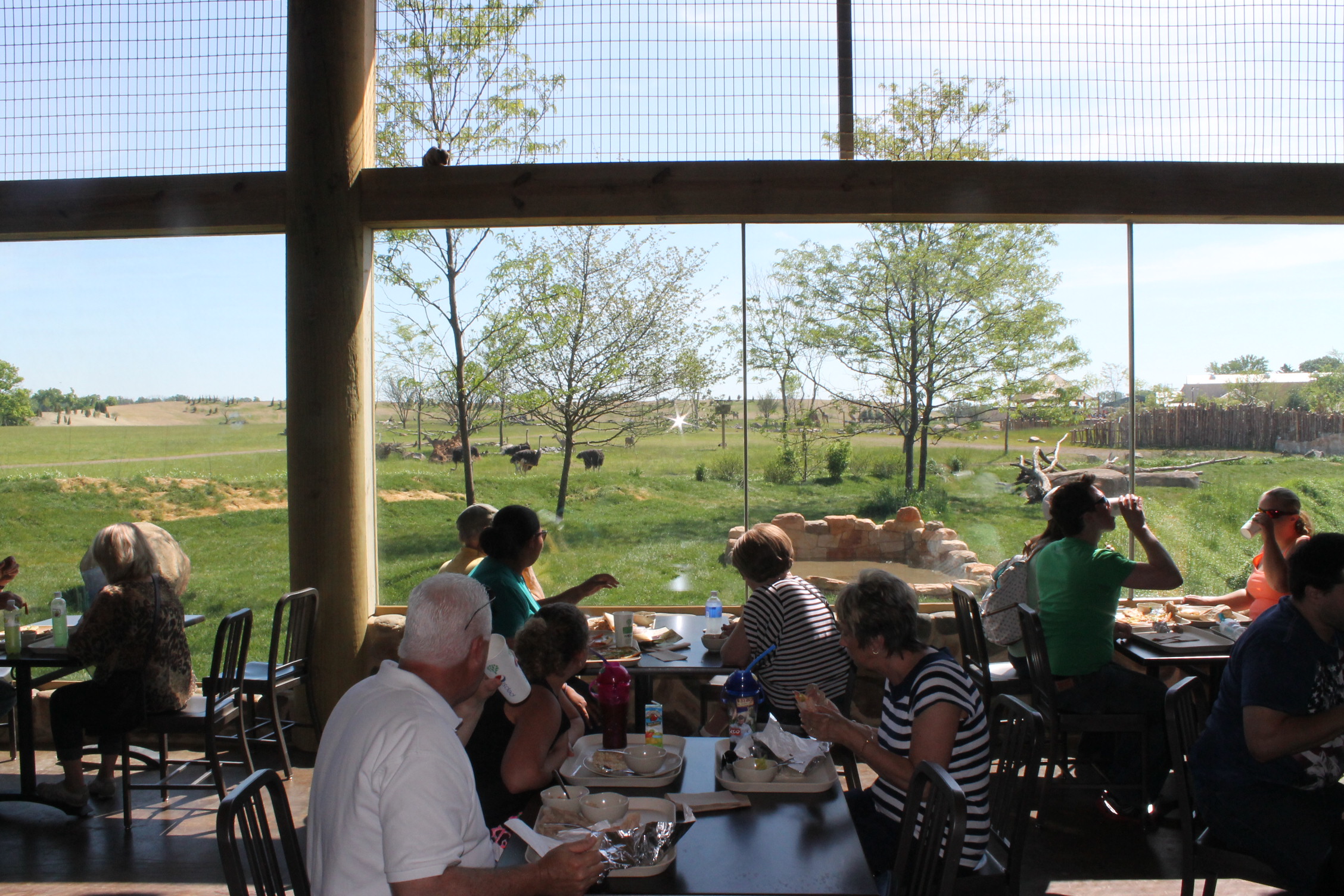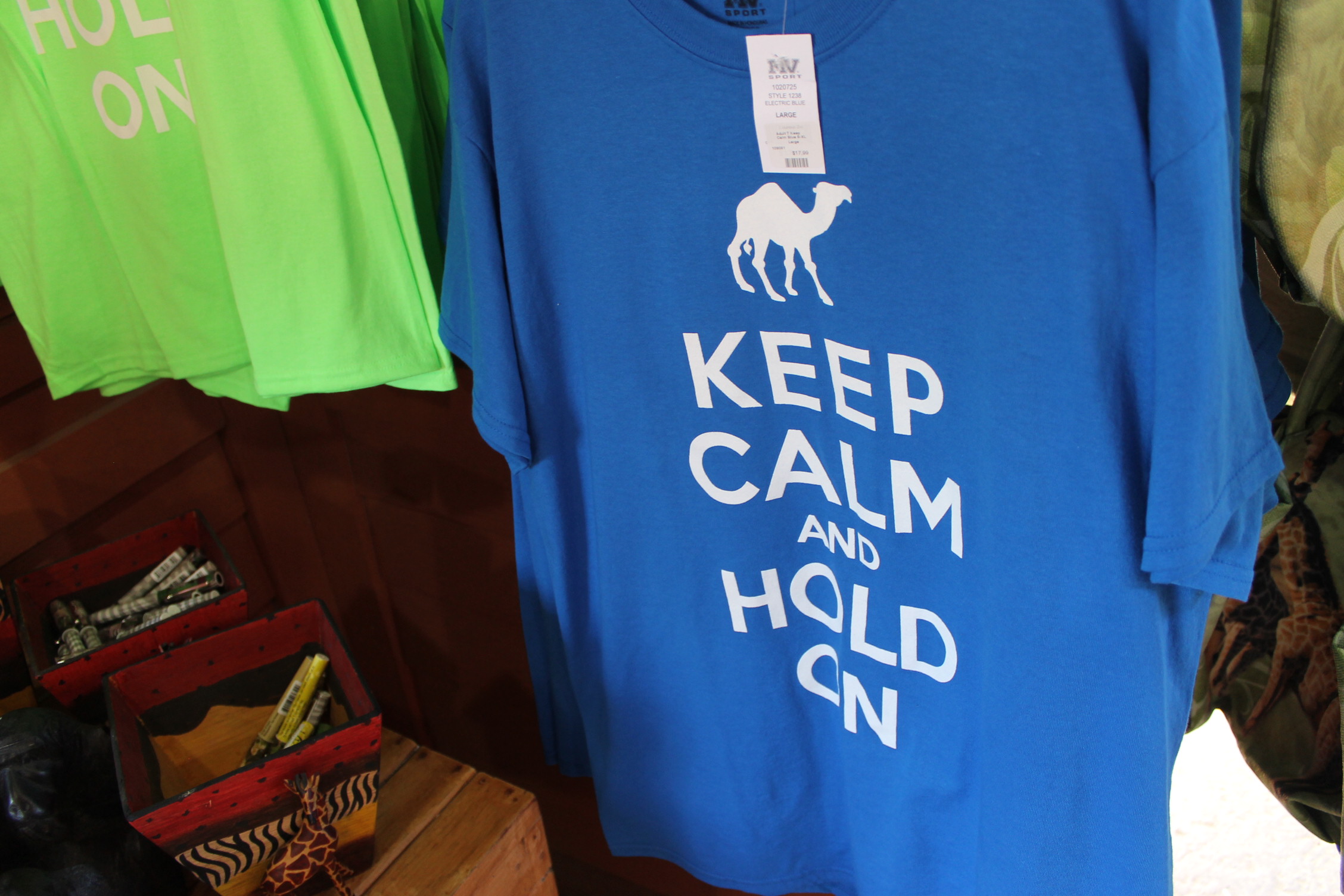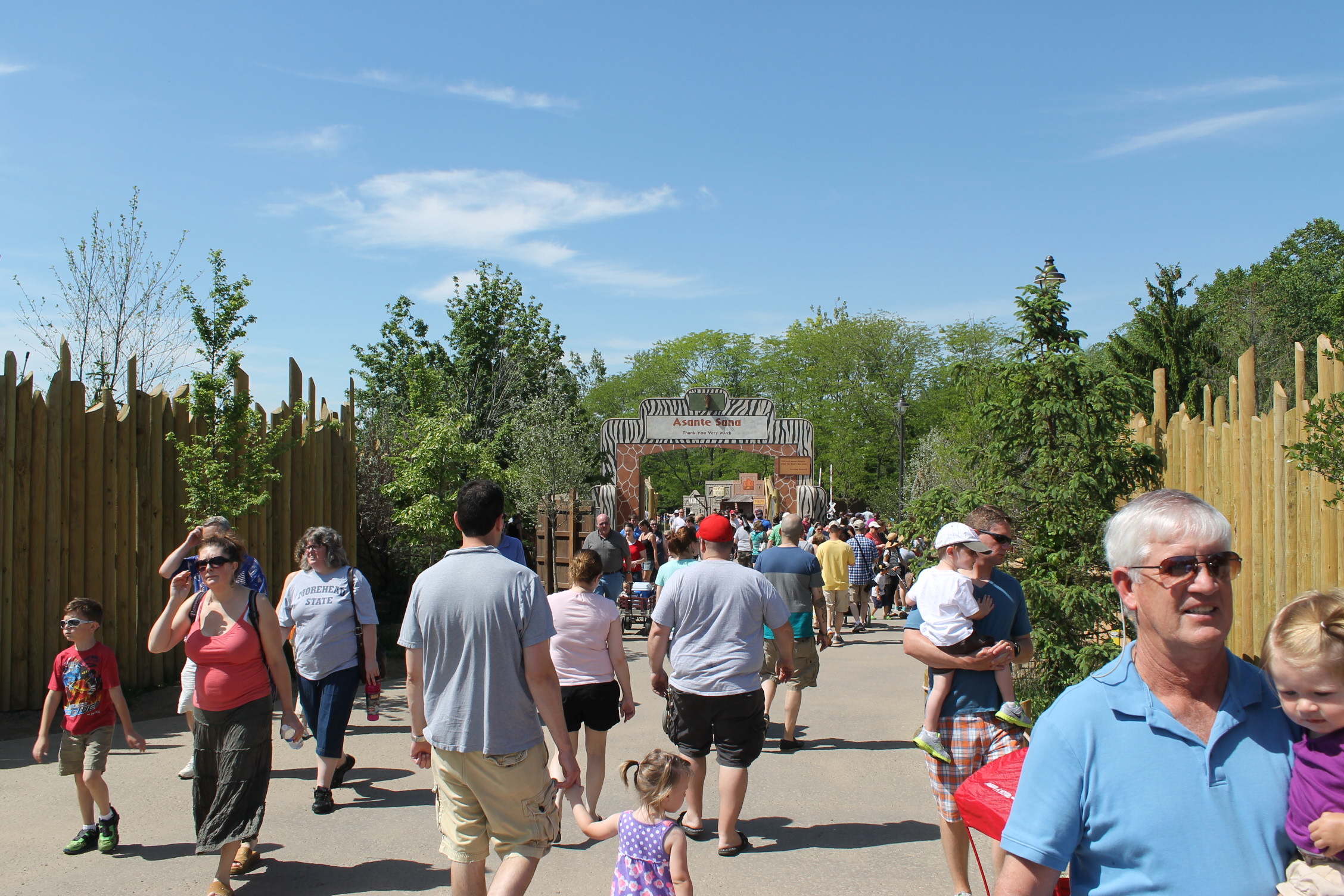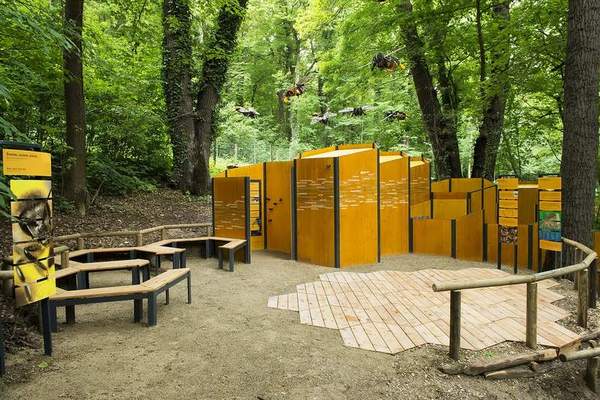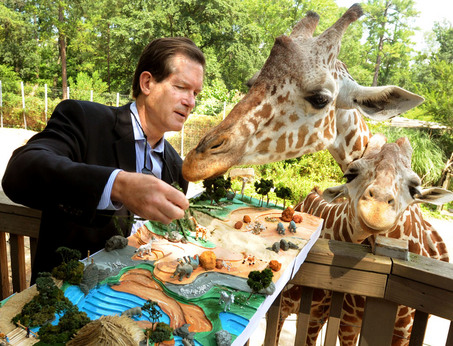(Slide 12) Here’s an example. Right now, in St. Louis, if you want to see art, you go to the art museum. If you want to learn about history – the history museum. You want science at the history museum? Too bad! You want gardens at the zoo? Well, you might be in luck. After all, the full historical name is “zoological park.” And we’re starting to see science displays creep into zoos. And more and more art is making its way to zoos as well.
So why do these have to be separate institutions? Why can’t we have one hybrid institution, where you can go and see animals and art, and learn some science and history, and have fun all the while doing it? What sort of zoo would that be?
(Slide 13) Well, it might look something like this: our own City Museum. This is a highly interactive, multi-story, zoo-like museum that combines animals with art, history, science, and play. It’s a tactile and sensory rich experience, in which visitors can scramble through underground chambers like burrowing prairie dogs, or climb into a lofty nest high in the trees, or playfully splash in a river grotto. Where they can physically be the animals they have come to see – the modern explorer and adventurer in an urban wilderness of visual and tactile richness. Opportunities for a multifaceted cultural experience, with an emphasis on rotating exhibitions and freeform visitor activities. Opportunity to repurpose un-used urban buildings.
(Slide 14) Here’s another example: COSI = Center of Science and Industry. Science museum on Scioto riverfront in downtown Columbus Ohio – opened here in 1999, institution since 1964. Really cool Ocean zone: Poseidon themed interactive water play area, where we learn about things like laminar flow and water surface tensions, while having fun soaking our friends in the process. Why is there not an aquarium here? This is the perfect place for it.
(Slide 15) Here is the next hybrid zoo type: this is what we do here at PGAV so I’m not going to go into much detail. Suffice it to say – the hybrid zoo/theme park has been around for awhile, but the trend is becoming bigger and bigger as we move into the future, and in fact it is one of the primary branches for the future of zoo evolution. In the future, the primary focus of such theme parks will still be on recreation and entertainment, and they will continue to lead the way in creating great visitor experiences and great storytelling. But the theme parks will draw more and more from other zoos and wildlife institutions. Conservation, education and even research will likely be a greater part of the institutions’ (and the public’s) focus in the future. There will be more sharing – and more blurring - between theme parks and other zoo institutions.
(Slide 16) Here’s another hybrid type. This is a map of Columbus OH, showing the Zoo (the orange circle) as well as several parks and urban greenways. Urban zoos are going to become decentralized and modeled on the university concept with multiple regional campuses scattered throughout the city and region. Merge with other urban greenspaces: metro parks, green trails, city parks and regional urban greenways. Oases throughout the city - a small aquarium here, a monkey island there. Multitude of smaller environments to maintain an educational and recreational access to the wild and to nature. The urban zoo will become more accessible, from both a physical and economic standpoint. More emphasis on local wildlife. Opportunities for nature recreation: ziplining, kayaking, ropes courses, bicycling, etc.
(Slide 17) Here’s another, a relatively new kind of zoo that we’re going to see a lot more of in the future: the safari park. A sprawling, regional destination – a hybrid between a standard zoo and a large wildlife preserve, usually housing African safari-type animals. Adventure park and destination, a full-day and possibly multi-day trip. 1,800 acre zoo visited by 2 million people annually, houses over 2,600 animals representing more than 300 species, as well as 3,500 plant species. Lots of different animal tour and recreational opportunities: caravan safaris to giraffe and rhino exhibits, behind the scenes safaris, cheetah runs, ropes courses, zip lines.
(Slide 18) Another example: the Wilds. 9,154 acres (37.04 km²) of reclaimed coal mine land. The Wilds is the largest wildlife conservation center for endangered species in North America. Home to over 25 non-native and hundreds of native species, including Scimitar-Horned Oryx, Przewalski's Horses, and Hartmann's Mountain Zebras. Private, non-profit - The International Center for the Preservation of Wild Animals, Inc. (ICPWA)– now working in partnership with the Columbus Zoo open between the months of May and October.
(Slide 19) Safari parks are destined to be huge regional draws with the potential for overnight/multi-day stays. Potential for ecotourism and “glamping” – in a yurt. San Diego Safari Park has the “Roar and Snore Safari” where you spend the night in an upscale tent (upper left). The Wilds has the yurts at Nomad Ridge (photos on right). Varying levels of luxury and ruggedness – I’d rather sleep in the fancy yurt in the center instead of that open air birds nest.
(Slide 20) When we think of national park wildlife, we think of the animals as being completely wild. These wildlife encounters, usually from our vehicles, are seen as a completely wild encounter with unadulterated nature. We believe that this is the “real deal”. We never really think of animals in the national parks or wildlife reserves as anything but completely wild. But the truth is, there really is no such thing as true, untouched “wilderness” anymore.
(Slide 21) The animals in national parks are (for the most part) free-ranging, but they are still intensely and actively managed. This happens in not just the North American parks but also those in Africa. Examples:
At Rocky Mountain National Park, rangers manage elk herd sizes through a variety of birth control techniques
There are concerns at Kruger National Park in South Africa, where there are now arguably too many elephants that are destroying most of the vegetation.
National parks are really not so different from zoos
More and more control measures are being instituted (bear-proof food lockers, etc.)
Much of the park rangers’ time is spent monitoring the animals, relocating nuisance individuals when necessary, tracking the size and health of herd populations, eradicating invasive and exotic animal species, and more
Future for these parks - even more wildlife management to protect the animal populations; more borrowing and sharing of ideas with zoos and other wildlife institutions.
(Slide 22) Final hybrid type. For much of their history, many wildlife rehabilitation centers refused to accommodate visitors. These are places that nurse sick, injured or orphaned wildlife back to health, for release back into the wild. They have seen visitors as nuisances or distractions at best or, at worst, as people in direct opposition to their stated goals. Some have associated visitor accommodation with the “lesser” goals of recreation and entertainment. But that has been changing. These places are realizing that their facilities are unique places for visitor education and awareness, and are really starting to attract visitors with interpretive experiences and elaborate visitor facilities. They will continue to merge with other types of zoos as we move forward.
(Slide 23) Ok, that was a quick overview of several different types of hybrid zoos. Now I’m moving on to other directions: Looking further into the future, many of these trends are for zoos 50 to 100 years from now.
(Slide 24) First Trend: the Bubble Ecology Zoo – a self-contained place that replicates full ecological systems and habitats, in order to best house animal species outside of their preferred/original climatic and bioregional zone. Inspired by the ideas of Buckminster Fuller. We are already starting to do this, but this is taking it one step further to create a fully-functioning self-contained ecosystem. Designed by an associate of Buckminster Fuller. Still world’s largest closed system. Now owned by the University of Arizona since 2011. 3.14-acre structure. Generally considered to be an unmitigated disaster (from the perspective of a social experiment), but is still inspiring future zoos.
Info from web: “Constructed between 1987 and 1991, it explored the web of interactions within life systems in a structure with five areas based on biomes, and an agricultural area and human living and working space to study the interactions between humans, farming and technology with the rest of nature. It also explored the use of closed biospheres in space colonization, and allowed the study and manipulation of a biosphere without harming Earth's.”
(Slide 25) Houses plants collected from all around the world. Opened in 2001. Info from Web:
The domes consist of hundreds of hexagonal and pentagonal, inflated, plastic cells supported by steel frames. The first dome emulates a tropical environment, and the second a Mediterranean environment.
The Tropical Biome, covers 3.9 acres and measures 180 ft high, 328 ft wide and 656 ft long. It is used for tropical plants, such as fruiting banana trees, coffee, rubber and giant bamboo, and is kept at a tropical temperature and moisture level.
The Mediterranean Biome covers 1.6 acres and measures 115 ft high, 213 ft wide and 443 ft long. It houses familiar warm temperate and arid plants such as olives and grape vines and various sculptures.
Meandering path with views of the two biomes, planted landscapes, including vegetable gardens, and sculptures that include a giant bee and towering robot created from old electrical appliances
(Slide 26) Info from Web:
"Desert Dome" is the world's largest indoor desert, as well as the largest glazed geodesic dome in the world. Opened 2002. Beneath the Desert Dome is the Kingdoms of the Night,and both levels make up a combined total of 84,000 square feet. The Desert Dome has geologic features from deserts around the world: Namib Desert of southern Africa; Red Center of Australia; and the Sonoran Desert of the southwest United States.
Lied Jungle is one of the world's largest indoor rainforests: Visitors can walk along a dirt trail on the floor of the jungle as well as on a walkway around and above the animals. Opened 1992. 123,000 square feet of floor space, of which 61,000 square feet is planted exhibit space; 35,000 square feet of display management area; and 11,000 square feet of education area
(Slide 27) Designed unveiled in 2010, but plans shelved in 2011 due to loss of funding. Also included plans for a hotel. Info from web:
112 feet high and larger than the Tropical House at Eden. The project covers 172,000 square feet and will simulate the natural African rain forest habitats of the Congo. It includes an undulating dome which will be one of the largest ETFE clad free form roof structures in the world and contain a jungle canopy with an authentic climate.
The 'Heart of Africa' Biodome will be home to a band of gorillas, a large troop of chimpanzees, okapi (rare giraffe-like creatures), birds, amphibians, reptiles, fish, and invertebrates.
An interactive water ride will provide extensive views of the animal enclosures.
Themed retail and dining facilities will also be incorporated.
(Slide 28) Architectural Design Competition for a Tropical Garden. Unbuilt, designed in 2011
(Slide 29) Designed in 2009. Four biozones: Central Asian Steppe, Arctic Pole, Asian Temperate Forest, Central Asian Mountain. Info from web:
Described by architects:
“The zoological island of Korkeasaari will be cut off again. Its architectural interventions will be concentrated to make it wild and mysterious once more – a park / garden as a place of popular privilege, the nobility of the future city.
Architecture disappears in favour of controlled geography, like the resurgence of a neighboring landscape. The entrance grouping the set of utilities crucial to the running of the zoo becomes a focus of visual identity, somewhere between form and shapelessness, pierced with cavities.
Like layers of skin peeled back to receive an implant, there will be an above and a below that dialogue and interpenetrate one another. Areas of light, uncertainty, reflections and depths will be developed, offering the first emotions of a visit that will play on time and the seasons through four biozones :
Central Asian Steppe
Arctic Pole
Asian Temperate Forest
Central Asian Mountain”
(Slide 30) Multistory zoo. Why not go vertical? Especially in increasingly urbanized and dense populated areas. Zoos don’t have to be horizontal. Aquariums have been going vertical for decades.
Dutch Pavilion: explored topics of ecology, congestion, population density, the relationship between natural and artificial
6 levels: dune landscape, greenhouse landscape, pot landscape (which has trees), rain landscape, and more
Info from web:
“The idea of the pavilion was characterized by the superimposition of six ways of being of the landscape.From the ground floor, the "dune landscape" leading to "greenhouse landscape," space in which nature and, above all, agricultural production, showed strong union with life, even in the new high tech world.In the "pot landscape" big pots hosting the roots of trees located on the top floor, while throwing screens and digital images of light and color messages.
"Rain landscape was changing in the space devoted to water, which was turned into a screen and in support of audiovisual messages; large trunks of trees populated the" forest landscape" while building on top of the" polder landscape "hosted large wind blades and a large green area.”
(Slide 31) Star-shaped tower based on a nucleus of a tree trunk, designed to maximize space, views, and circulation. Sustainable strategies: rainwater harvesting, solar power. Info from Web:
“The Vertical Zoo is a balanced and sustainable space where people and animals can coexist in harmony. Wrapped in lush vegetation, the star-shaped building makes use of green building strategies to reduce heat gain, encourage natural ventilation and soak up rainwater. Totally self-sufficient, the tower's aim is to be a sustainable refuge for all animal kingdom species.
Built from a six armed star-shaped level designed to maximize space, views and circulation. It is based on a nucleus or a tree trunk from which emerges six branches, each 20 sq meters in size which all serve different programmatic needs. These program blocks provide space for zoo activities, visitor needs, administration, circulation and ventilation, and spaces for sustainability. Modular by design, more star-shaped levels can be added on top as needed or as funding becomes available for new facilities.
Capable of providing its own water and energy through rainwater collection and solar power. Arrangement of the star-shaped levels encourages natural ventilation and improves views. Multiple towers can be built together to create a larger interconnected complex.
The Vertical Zoo is designed to be as much about the animals as it is about the people who visit and encourages meeting and cohabitation as a way to promote equanimity between the species.”
(Slide 32) A competition for the Costanera Sur Ecological Reserve. Info from web:
A towering habitat meant to resemble a natural cliff that would also provide nesting ground for migratory birds
Goal: recreate a cliff habitat for the types of animals that would naturally be living in such an environment
Footpath winding around an inner core of animal enclosures, all within a net-like steel shell that lets in air and sunlight as well as a controlled amount of rainwater in certain areas. The nets and cables support vegetation that gives the tower a more natural feel, and select pockets serve as open-air nesting for the birds.
Visitors reach the tower in cable cars connected to the public transportation system, and can then take in an even more spectacular view on a high-level observation deck.
(Slide 33) Low-impact zoo: a Zero Energy Zoological Island in South Korea. Sustainable strategies: zero-carbon transport systems, renewable energy sources, rainwater collection sites, and all waste would be reused as either composted fertilizer or biofuel. Roughly dodecahedron-shaped habitat tower. Info from web:
“The zoo’s landscape of natural peaks and valleys is ideal for zoo development. The flat valleys could host animals, while more mountainous areas could be protected and treated as nature reserves. All transportation, energy sources and building systems would be housed in a so-called “infrastructural green belt” located at a height of 20 meters. Everything above and below would remain untouched.”
(Slide 34) A wildlife corridor is an area of habitat connecting wildlife populations separated by human activities or structures (such as roads, development, or logging). Huge, regional scale – possibly spanning multiple countries. Allows an exchange of individuals between populations. This may potentially moderate some of the worst effects of habitat fragmentation,wherein urbanization can split up habitat areas, causing animals to lose both their natural habitat and the ability to move between regions to use all of the resources they need to survive. Habitat fragmentation due to human development is an ever-increasing threat to biodiversity, and habitat corridors are a possible mitigation. Here are some examples of wildlife bridges, which allow animals to cross human structures unimpeded. Especially useful for wide-ranging animals like wolves (Though, if I’m a wolf, I’m hanging out right by the wildlife bridge for prey).
(Slide 35) Here’s another example: green roofs. Becoming increasingly common. Scattered throughout dense urban areas on multiple rooftops. These could become home to migrating bird species and other migrating animal populations.
(Slide 36) Virtual or digital zoo is a way to interact with animals remotely, using technology. We all remember the PandaCam Crisis of 2013, also known as the government shut-down, when the Smithsonian’s National Zoo live feed from the panda exhibit went dark. As new technologies emerge, there will be more and more opportunities to view and interact with animals all around the world. The world is shrinking. To be honest, I find this type of zoo much less compelling. There is NO substitute for real, live, face-to-face interaction with real animals.
(Slide 37) In all likelihood we will have the technology to bring back extinct animal species in the next century. Advances in cloning technology and genome mapping. Likely species include:
Wooly mammoths, dodo birds, passenger pigeons, a relative of the zebra called the quagga, and the so-called "Tasmanian wolf," (which died out in the 1930s, according to Michael Noonan, a biologist at Canisius)
Not dinosaurs – we’re not making Jurassic Park
There are obvious, enormous ethical issues with this, but I’m not going to open that can of worms today.
(Slide 38) What I will say is this: This is probably going to happen in the next centuryso we should probably be thinking about what that means.
What does this mean for future zoos? Will these be the new pandas? The superstar species that draws most of the visitors?
If offered a live mastodon, what zoo will turn them away?
How do we keep these species from becoming just a mere curiosity?
How will we know if their physical, environmental, social and intellectual needs are being met?
Shouldn’t the ultimate goal be reintroduction to the wild rather than keeping a captive population?
It’s certainly a complicated issue, but a very real possibility.
(Slide 39) We’ve been sending animals (specifically mammals)up into space since the late 1940s. Lots of primates through the 1950s and 1960s. Even today, experiments with fish, mice, and more on the International Space Station. Primarily for research purposes thus far. What happens when we start to colonize space?
(Slide 40) Eventually we’re going to start colonizing space – the moon, Mars, an asteroid, the moon Europa, or elsewhere in the solar system. When we think of space colonies, we tend to think they will look something like this: Barren, dull, lots of metal and hard surfaces; The only life forms are human.
(Slide 41) But I think future space colonies will eventually look something more like this: with simulated natural habitats and lots of different life forms. Stanford Torus: 1975 proposed designfor a space habitat capable of housing 10,000 to 140,000 permanent residents. Info from web:
Ring-shaped rotating space station
Interior space of the torus itself is used as living space, and is large enough that a "natural" environment can be simulated; the torus appears similar to a long, narrow, straight glacial valley whose ends curve upward and eventually meet overhead to form a complete circle. The population density is similar to a dense suburb, with part of the ring dedicated to agriculture and part to housing
(Slide 42) Here are some other views. Whether we start colonizing the final frontier on giant rotating torus-shaped stations, or on terraformed colonies on the moon, Mars or Europa – we will bring our animal cousins with us.
(Slide 43) Conclusion:
While we don’t know all of the forms that zoos will take in the future
We do know that there will be lots of new types of zoos
We also know that the boundaries will blur between zoos and other institutions, creating fascinating new hybrid typologies
There are lots of exciting new frontiers to explore
As Zoo designers, we have the power to shape this new world and I’m really excited to keep moving forward
(Slides 44 & 45) Resources and Links









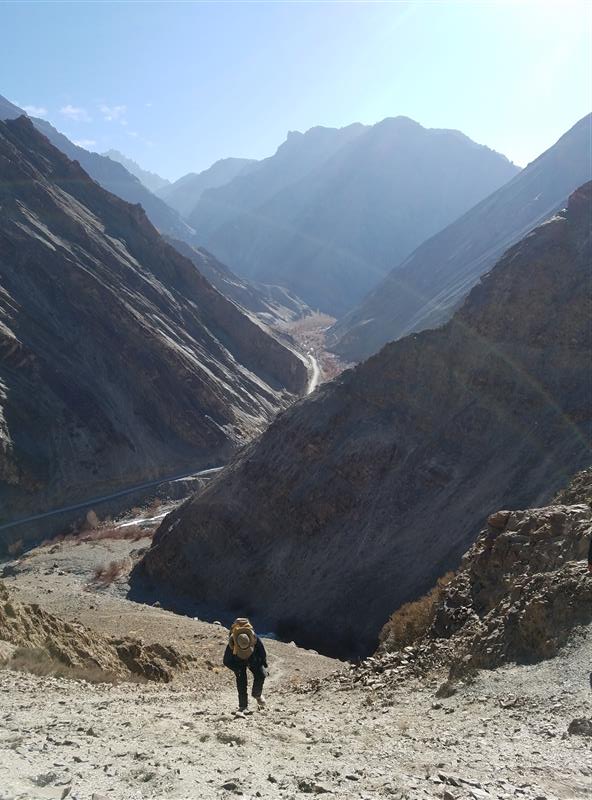







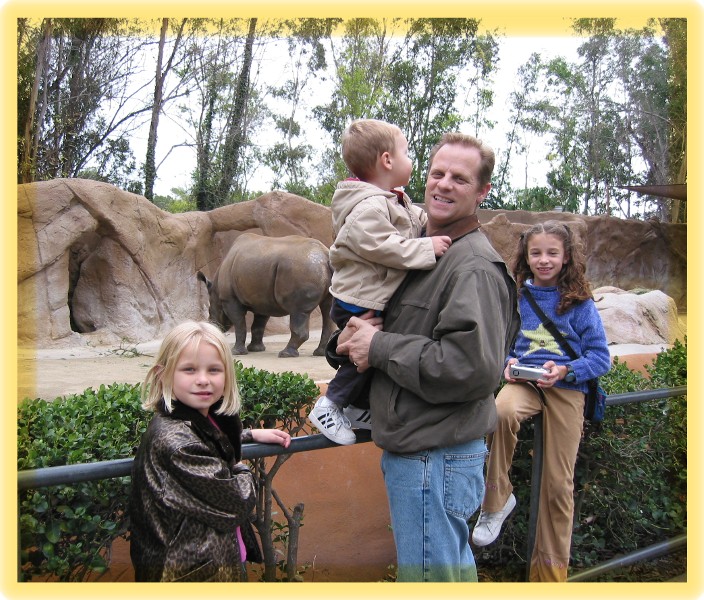







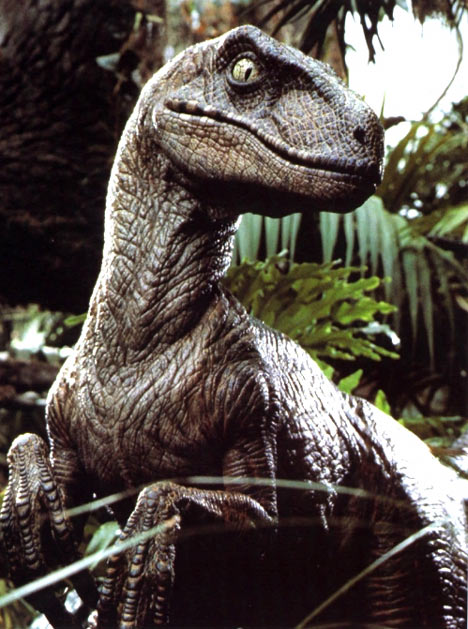


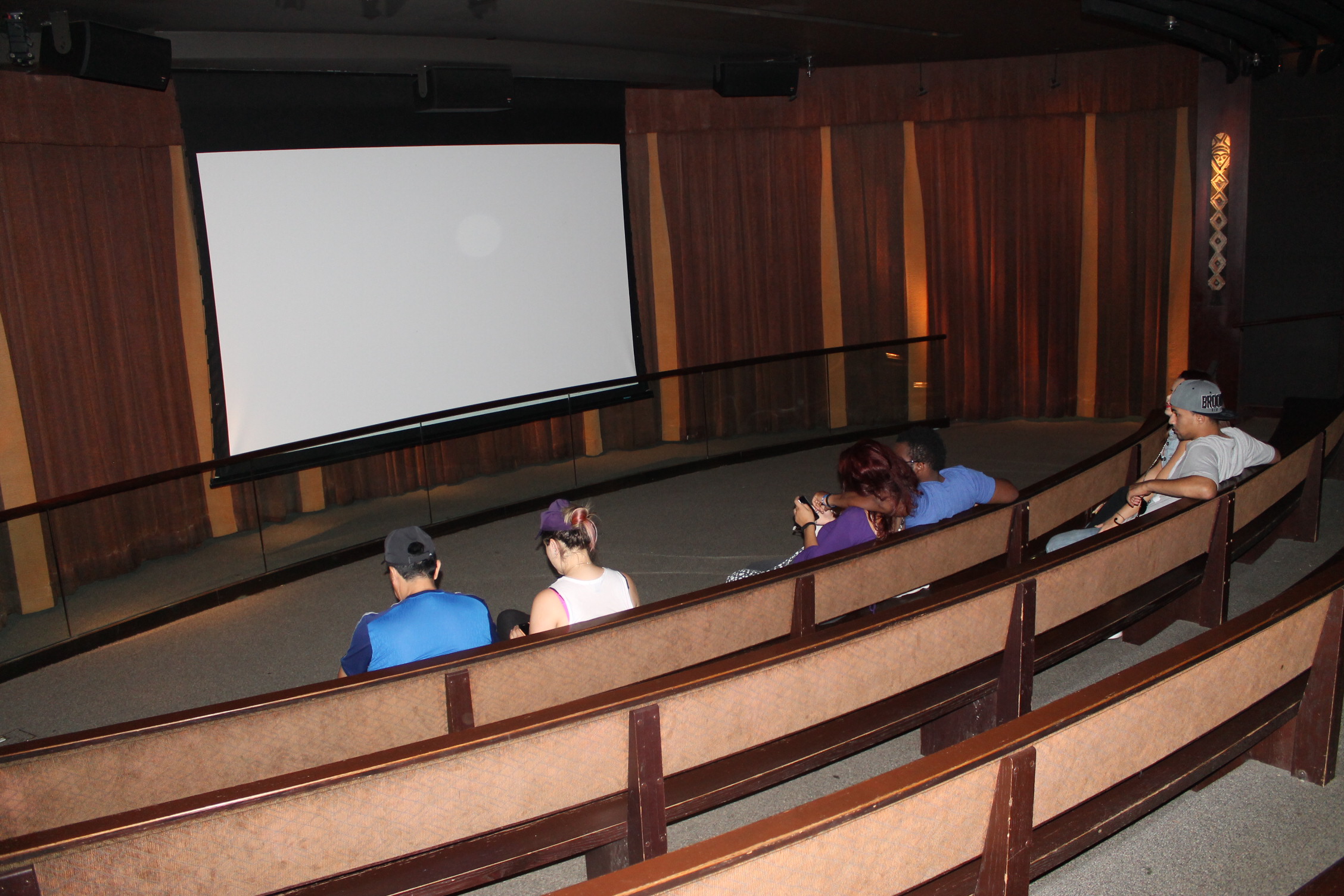
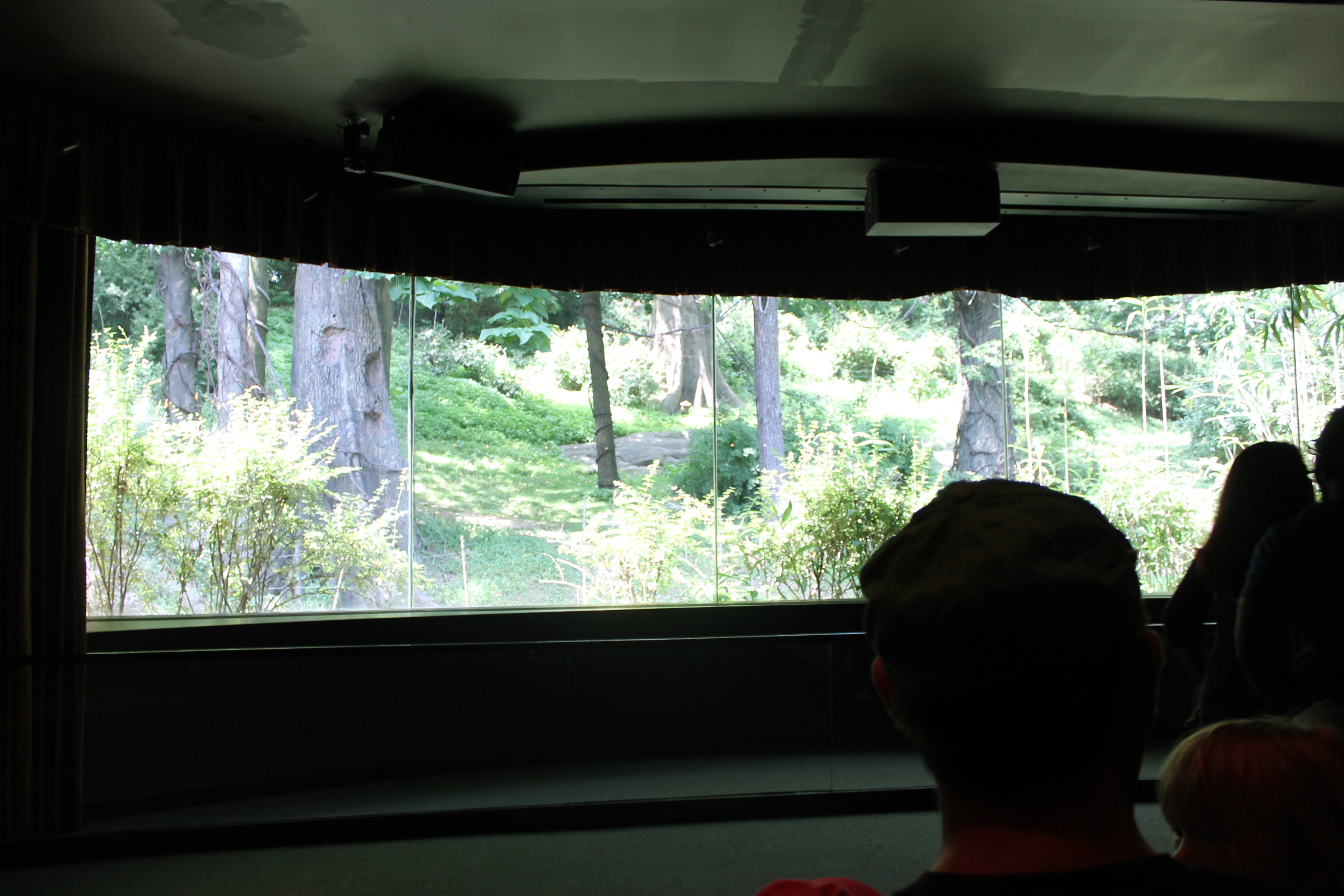
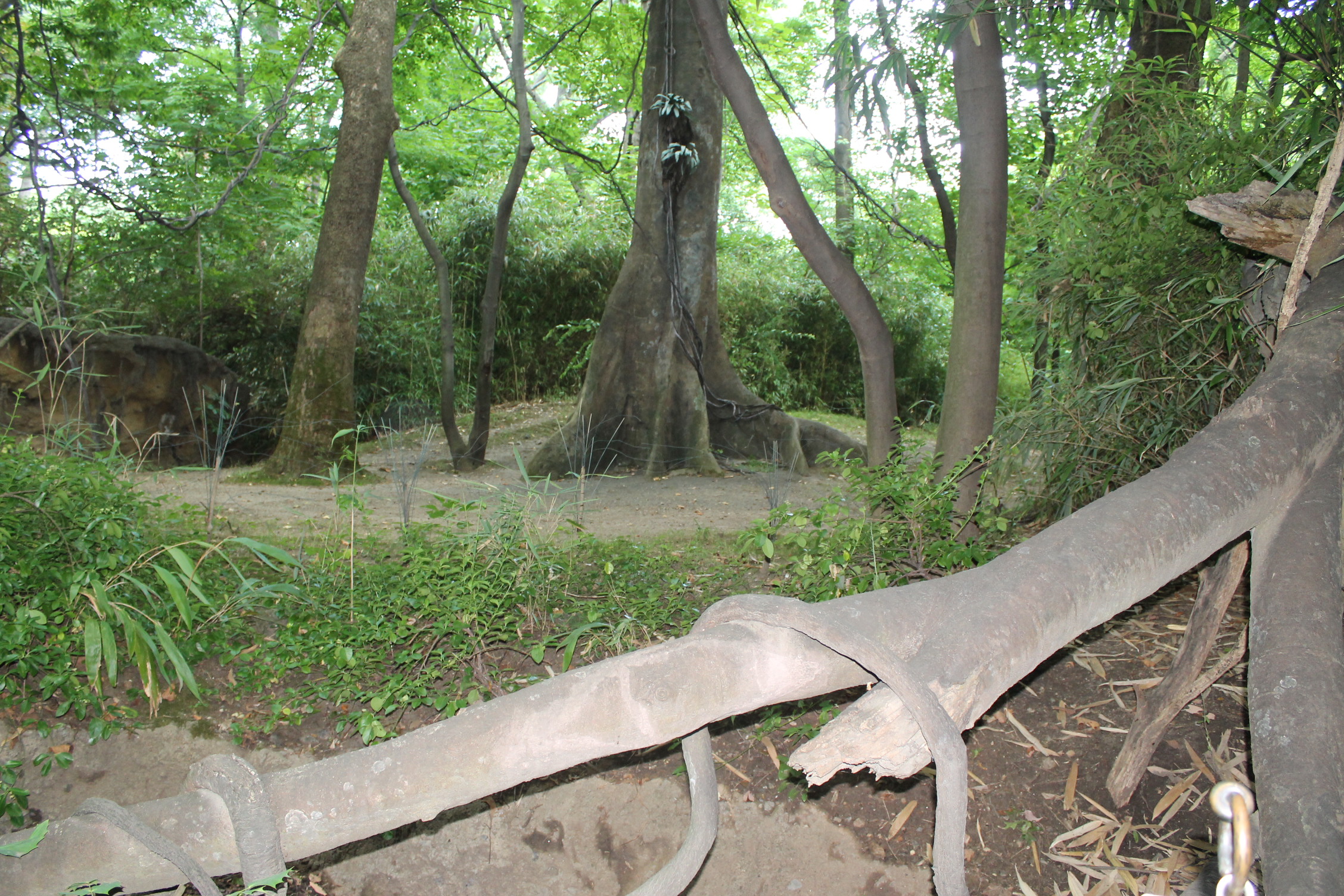




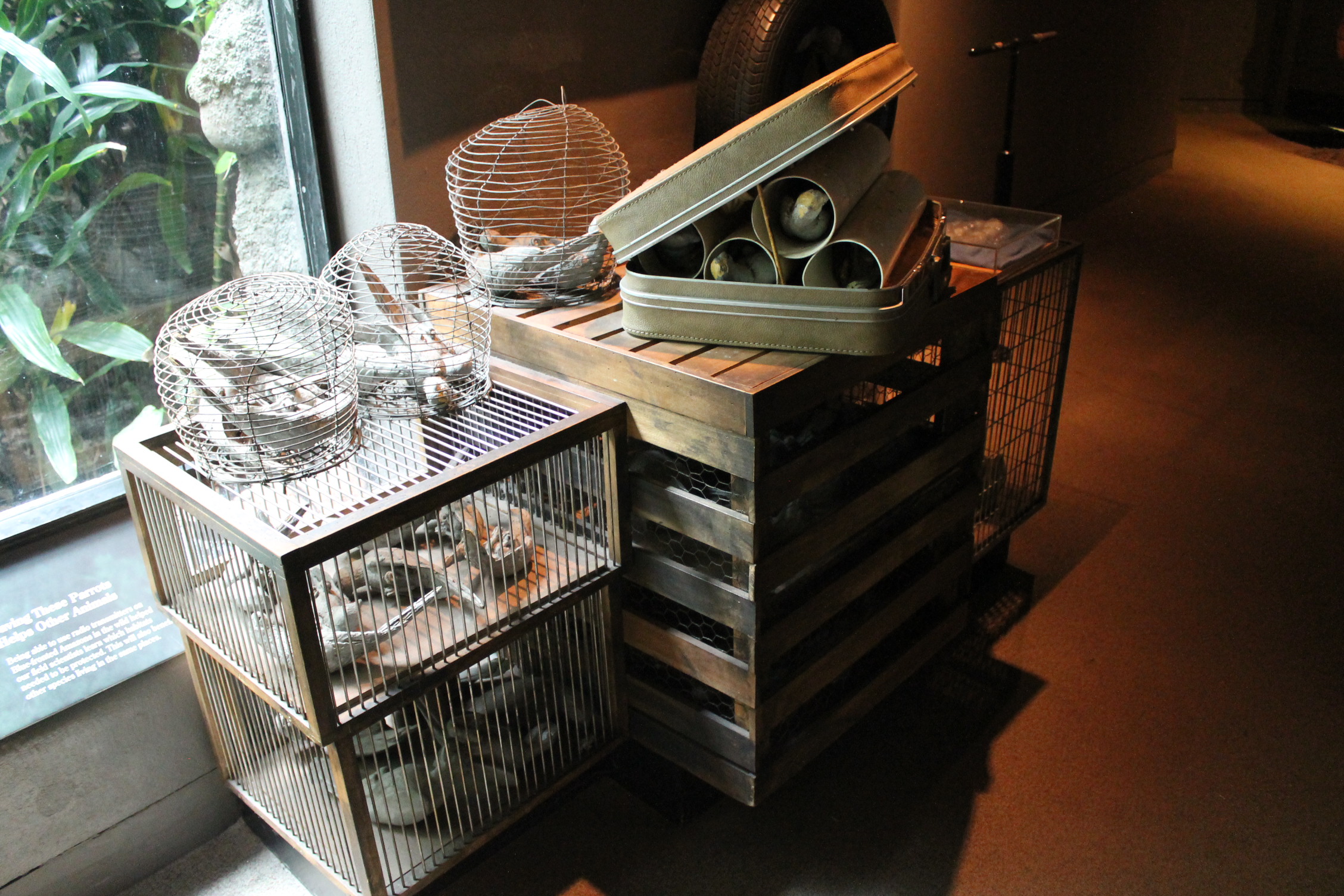
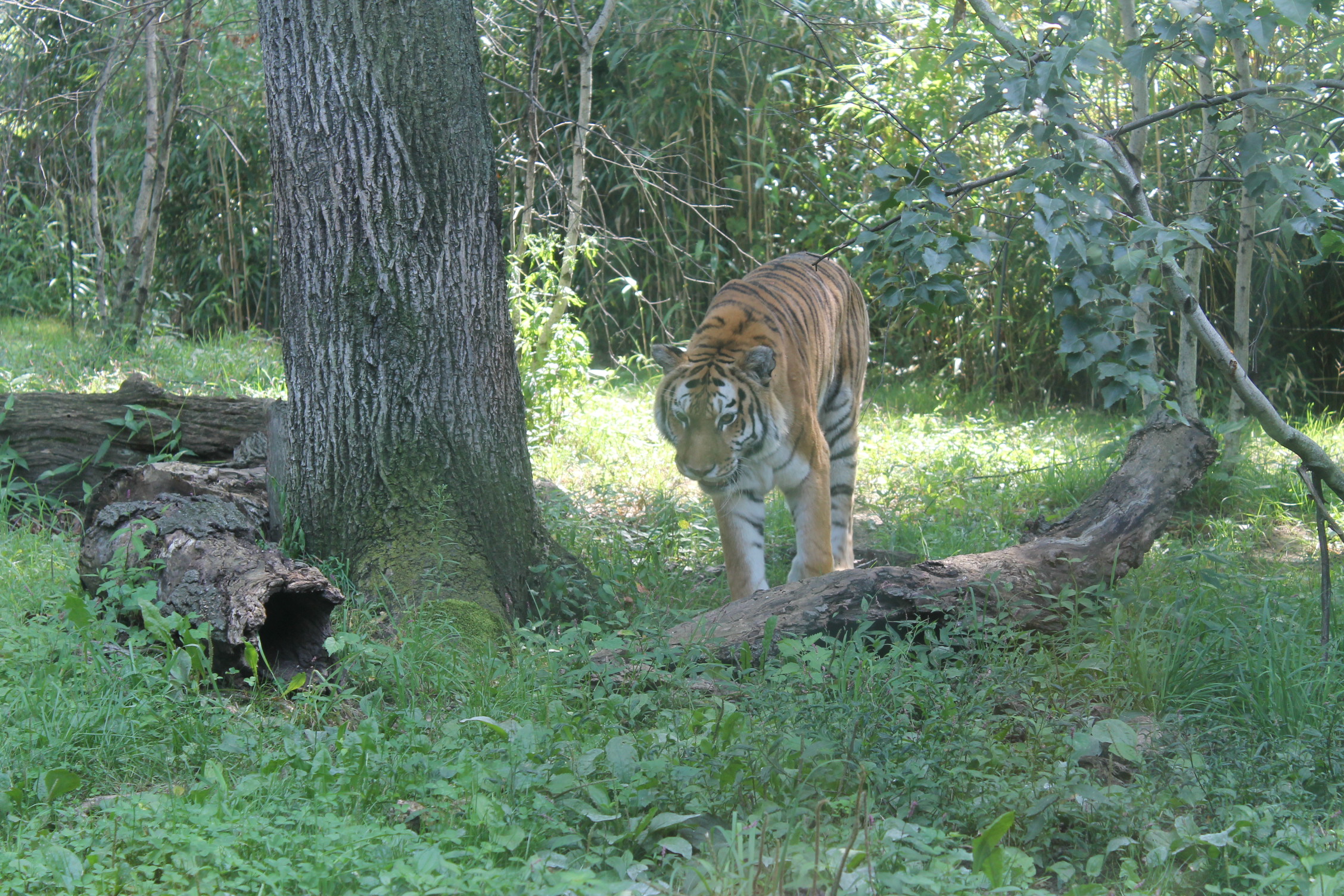
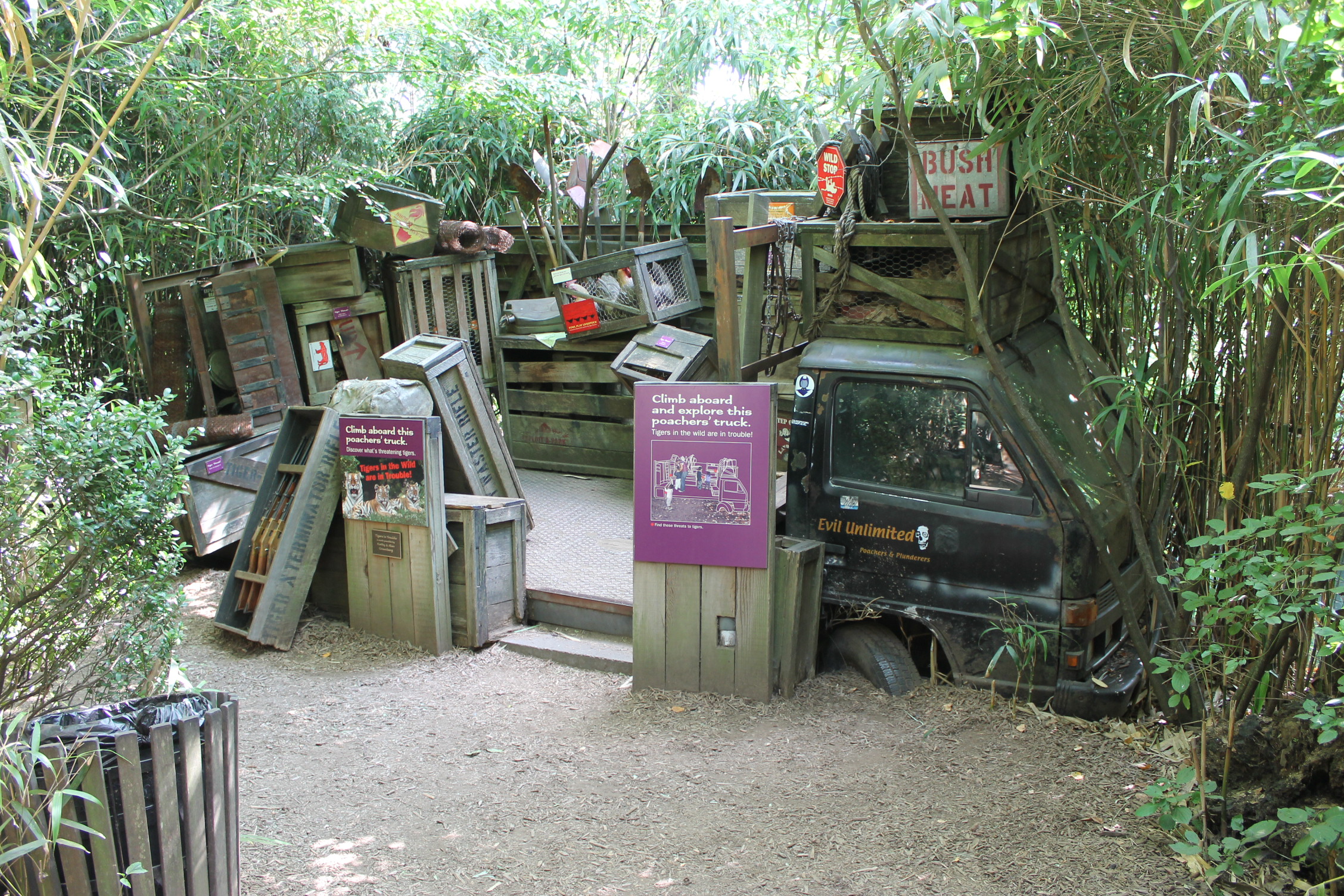
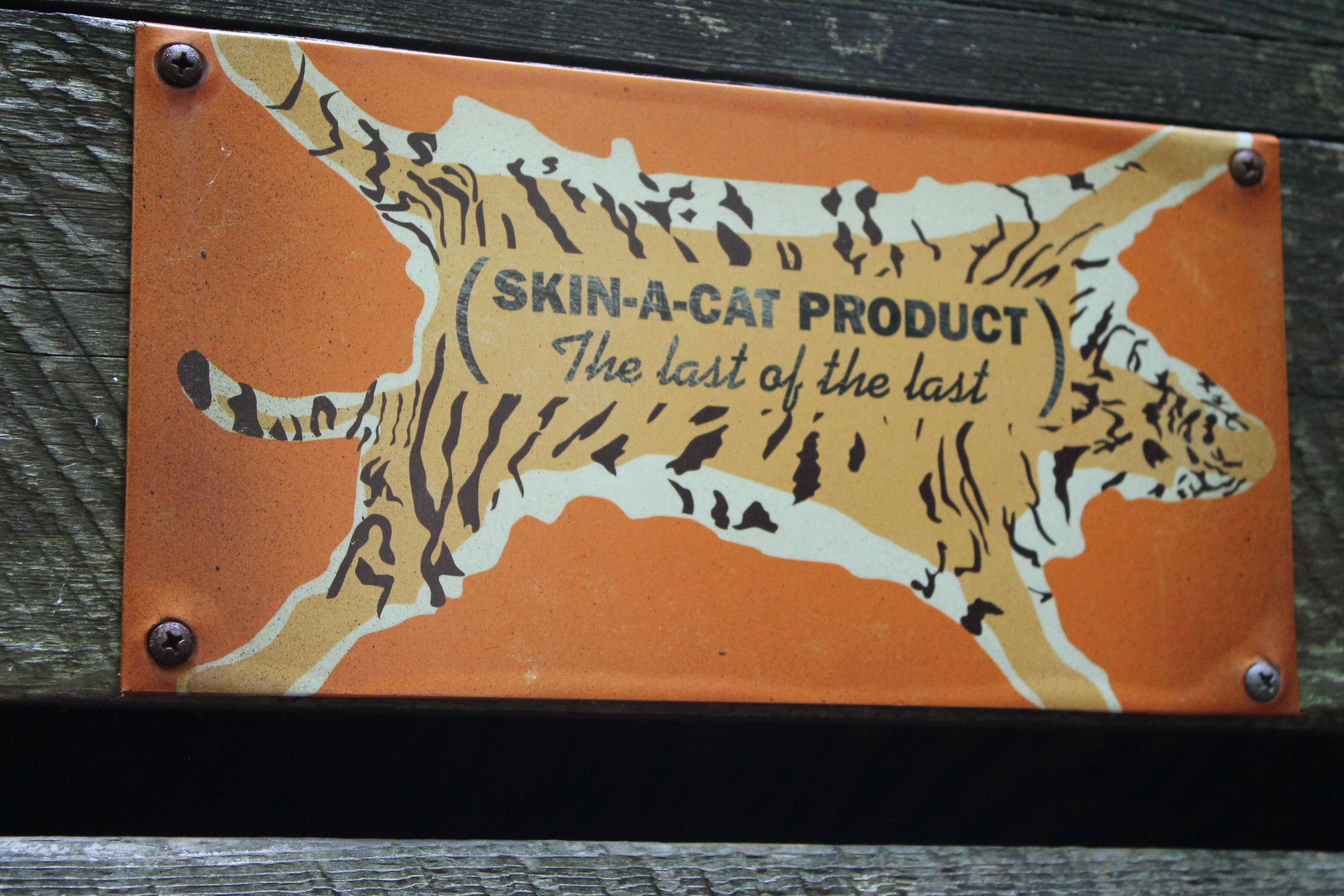

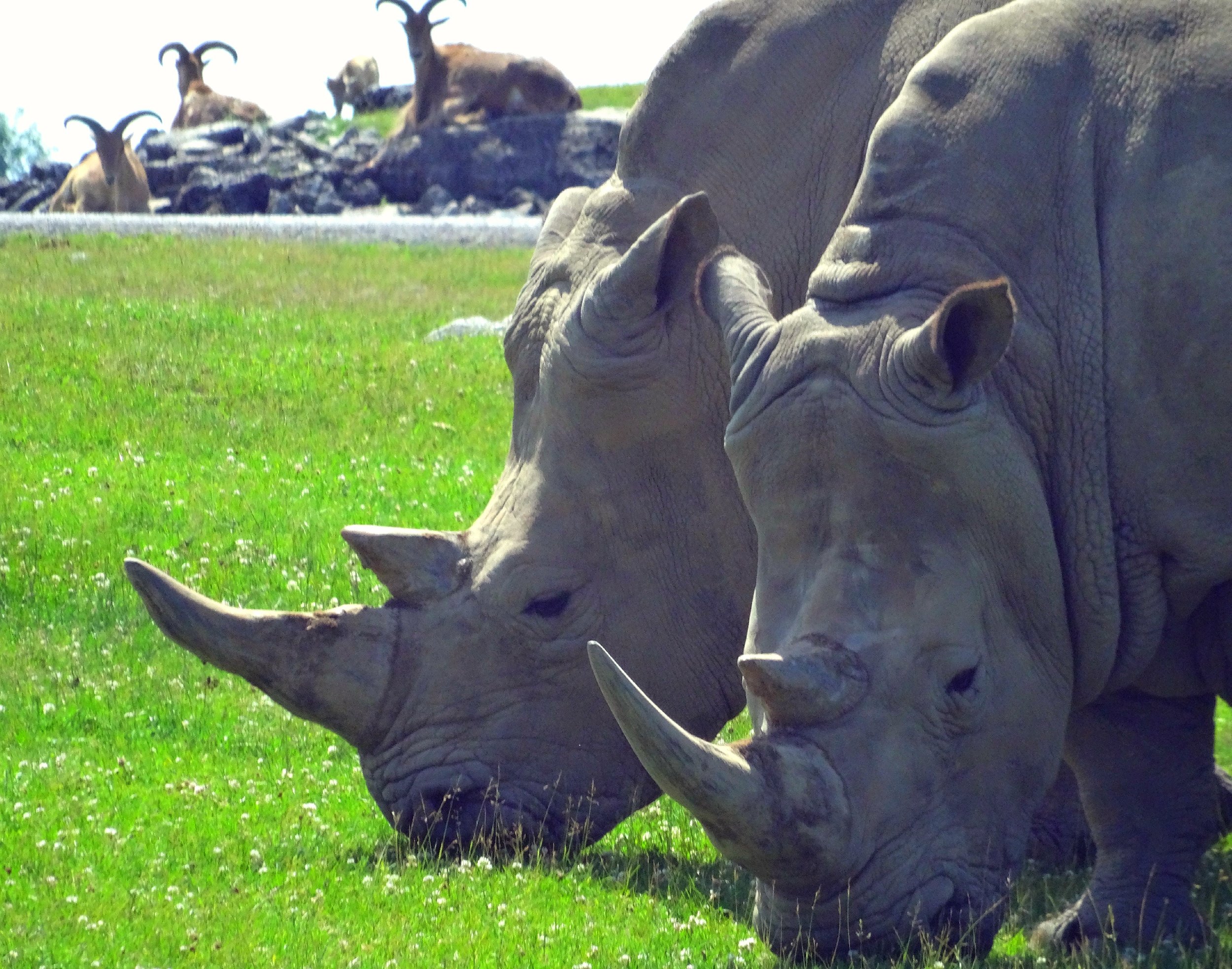
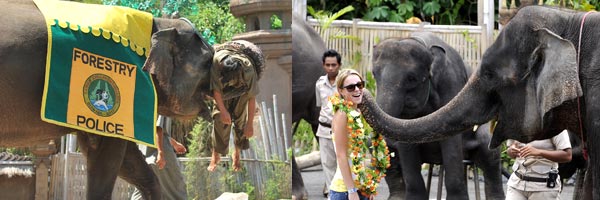
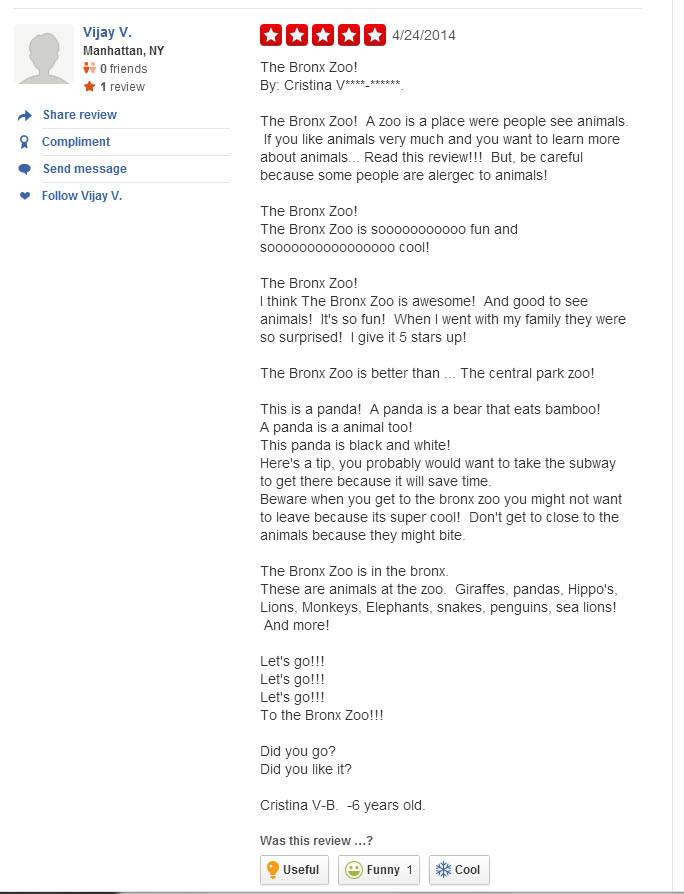




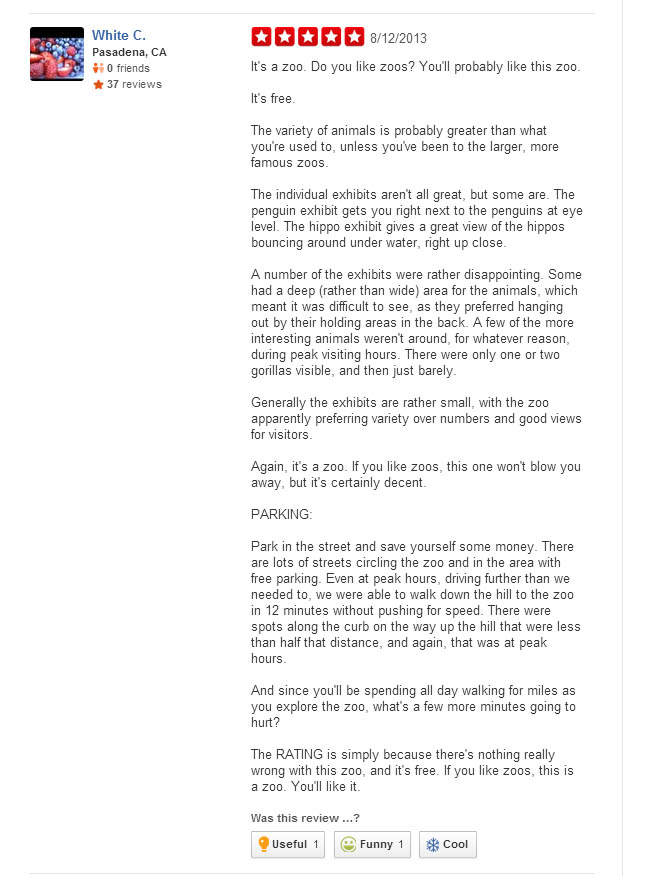





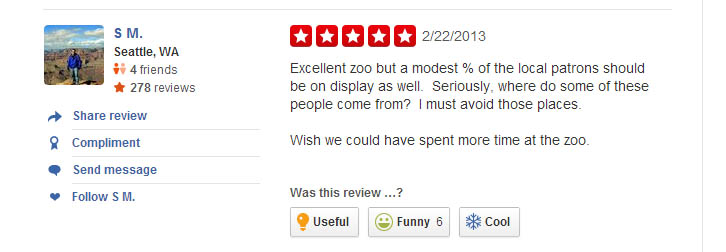

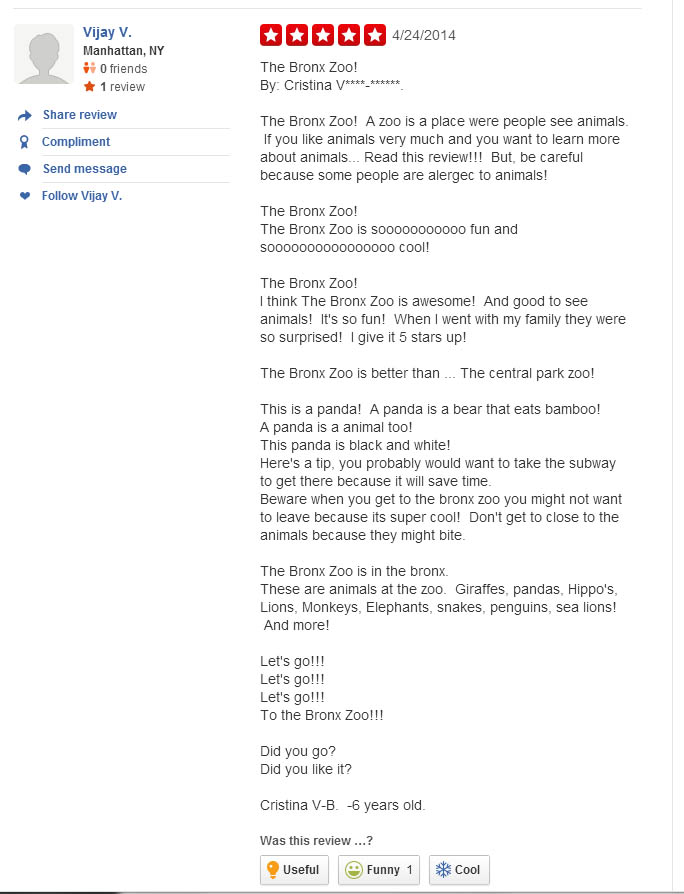
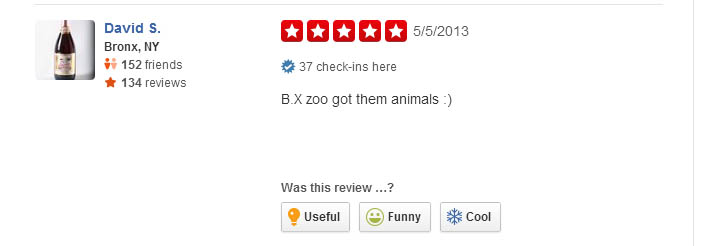

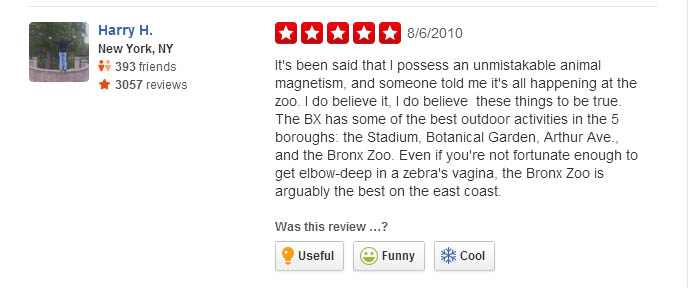







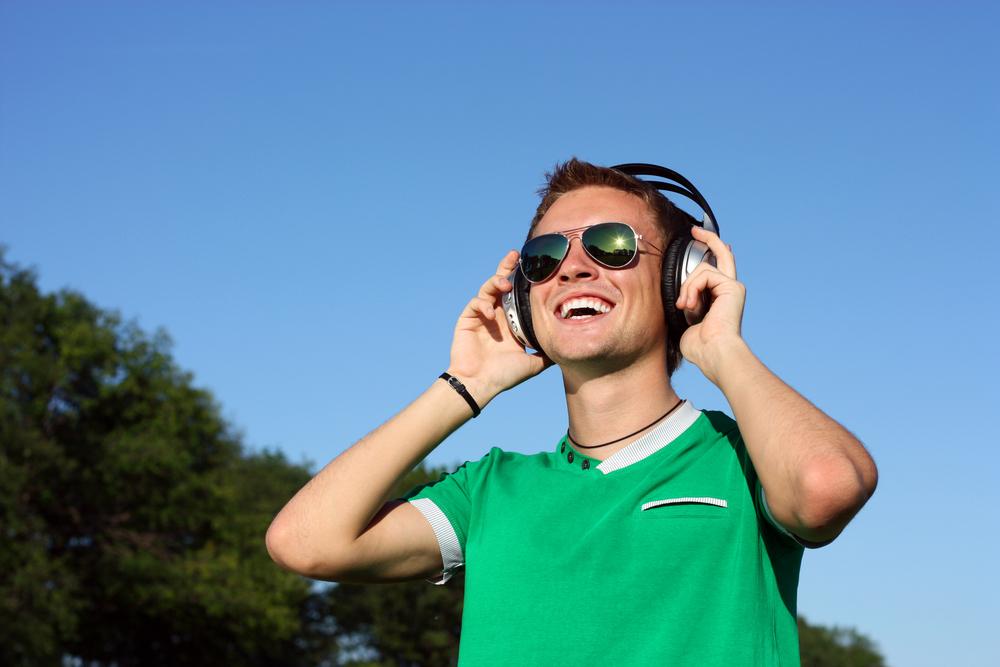
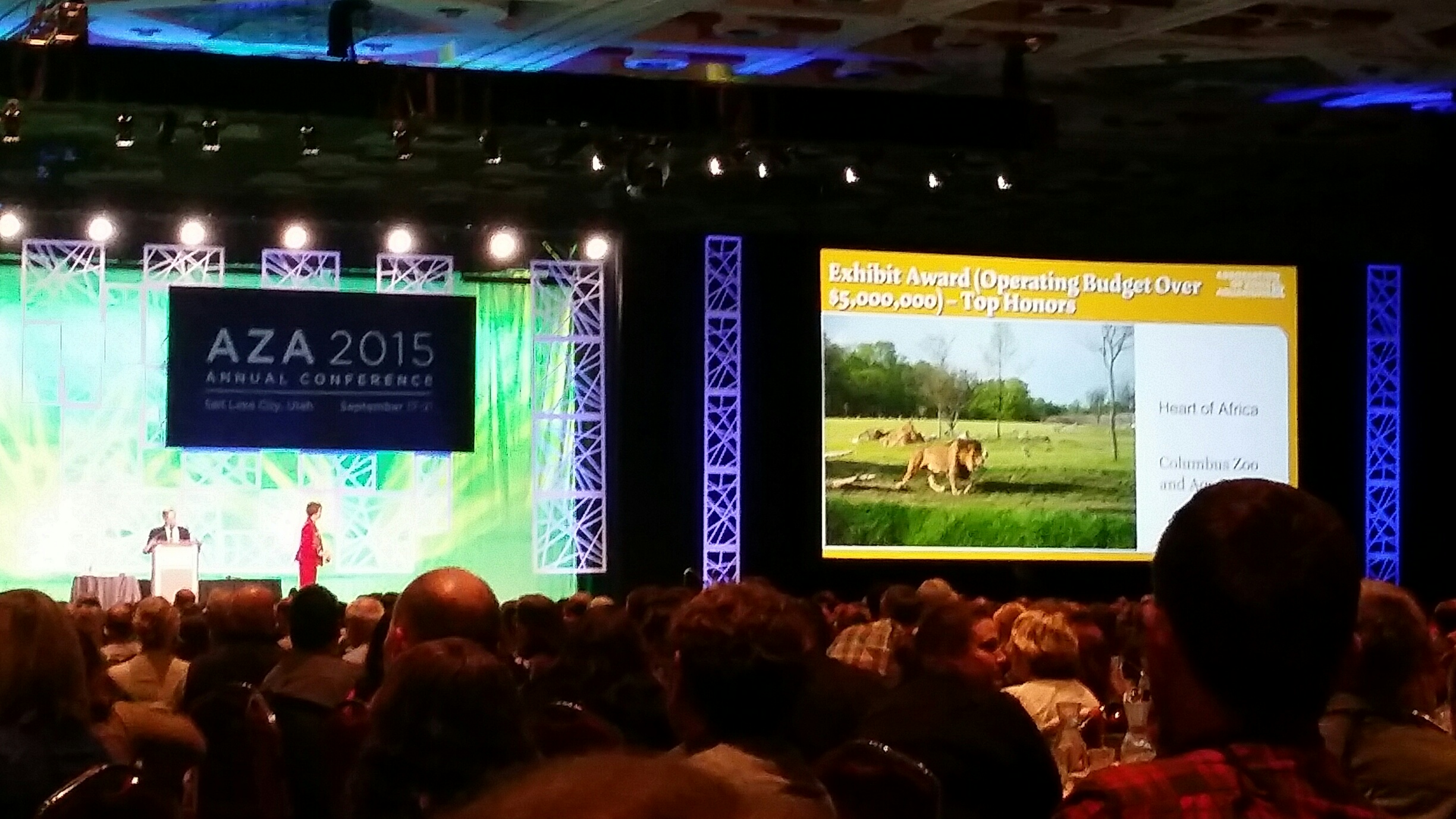
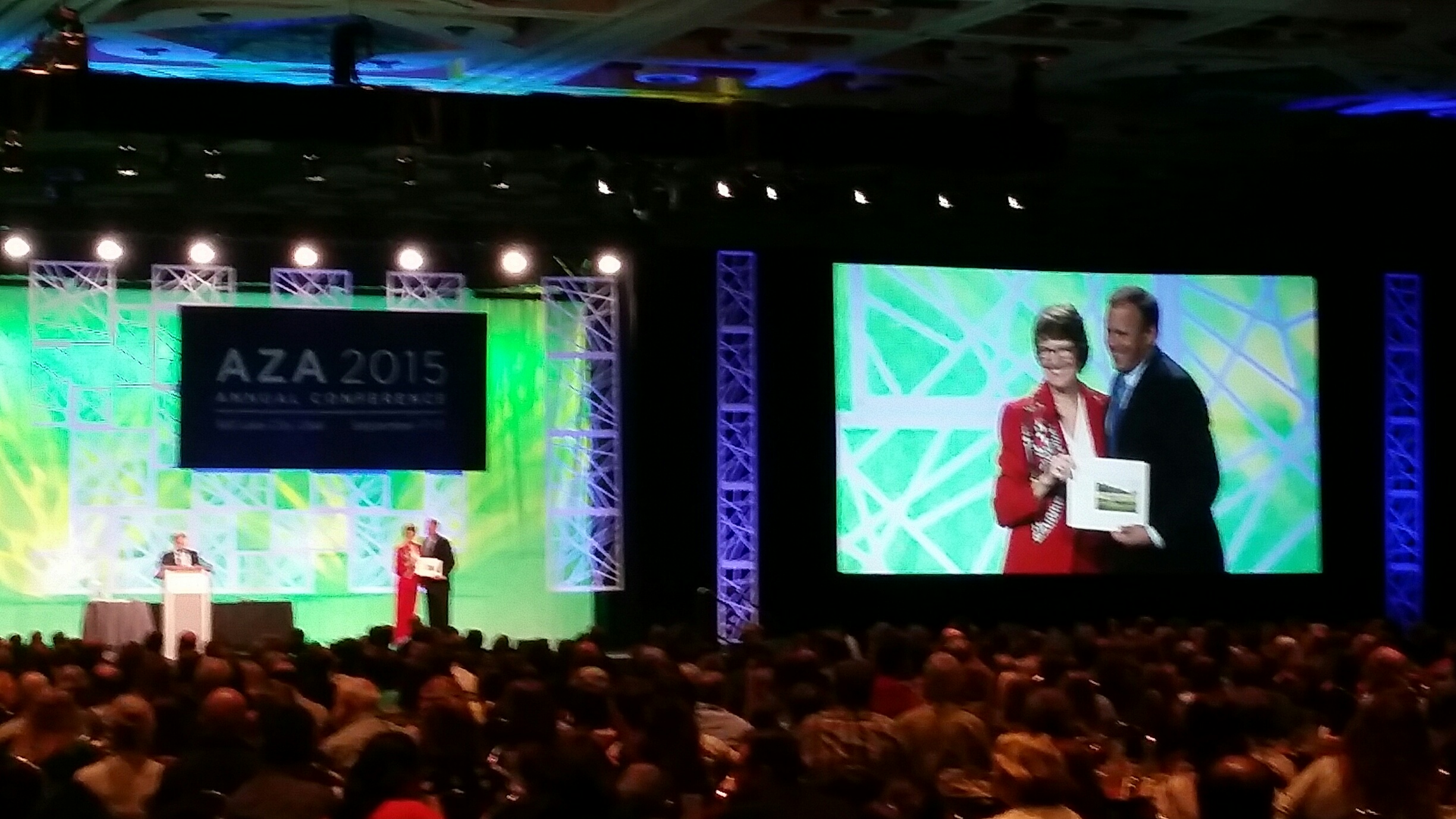
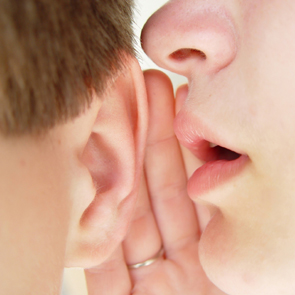 Even with a high industry success rate, like what PGAV has, many projects disintegrate and disappear entirely.
Even with a high industry success rate, like what PGAV has, many projects disintegrate and disappear entirely.

